Any online business that does not run an email newsletter list is leaving money on the table. An audience of 3,000 people can easily earn an extra $10,000 per month or more with email marketing. Best of all, it works for almost any kind of side hustle or business.
Building and growing a new email list can be tough without experience unless you have the right guidance. This extensive guide will walk you through the most important steps so you can get started the right way.
You’ll find more knowledge, training and tips in this course than you will in a $1,000 training course. Be sure to bookmark this page so you can return to it for future reference.
ESTIMATED READING TIME: 90 mins
Email Marketing Online Course
There are probably hundreds or even thousands of email marketing campaign tutorials, so why did I choose to write one?
The answer is quite simple: I have easy tips and strategies to share with you that I do not see other marketers utilizing.
I personally use these methods to sell my own products to make roughly $1,000 every month for every 100 subscribers on my list.
Everybody talks about how to attract new subscribers to an email list, but how often do you see other people talking about how to KEEP your existing subscribers?
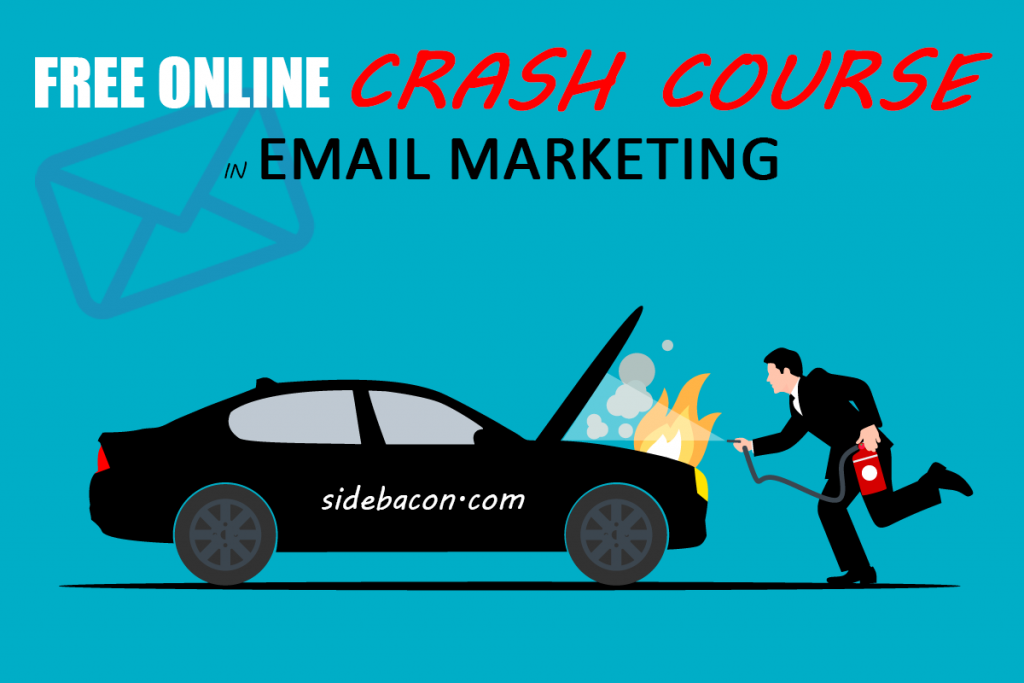
I’m going to give you a crash course in email marketing with this in-depth, online tutorial guide.
By the time you are finished reading, you will have all of the necessary knowledge to run a successful email marketing list. Best of all, I am going to teach you how to keep it successful for years to come.
Email Marketing Strategy
I want to emphasize one thing to help save you some time and energy.
Please, DO NOT just skim through this page and/or try to skip steps.
Each piece of this strategy serves a specific purpose that contributes to the success of an email newsletter list.
I know a lot of people will try to put their own spin on strategies developed by others, but I highly recommend that you try to at least build one newsletter list according to my recommendations before you try to change my strategy.
There are many aspects to my strategy that are absolutely essential for success, so make sure you don’t skip ANY steps or try to take shortcuts.
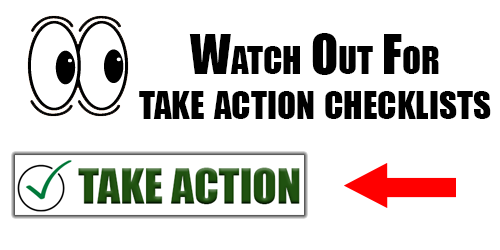
At the end of almost all chapters, you will find a ‘Chapter Checklist’. This is a very brief recap of the chapter that mentions the key steps/points.
Take a moment at the end of each lesson and make sure you understand each of the items on the checklist before you proceed. When you are ready to start your newsletter, you can use these checklists as a guide to make sure you take all of the required steps.
Email Newsletter Best Practices 2022
I’m not giving you information that was successful to build newsletters 5 years ago. All of my methods in this article are things that I have personally done in the last six months. They’re also the same basic tactics that I’ve been using for more than a decade because they simply work long-term. This timeless strategy that emphasizes useful content for readers not only works now in 2022, but it will still work next year in 2023 and beyond.
I am not the kind of marketer to make promises that won’t come true, so I’m not going to tell you that you will receive the exact same results that I have been able to achieve.

If you have some kind of knowledge and experience in almost ANY kind of niche, you can use the information in this training to build a full-time income VERY fast.
I had a lot of experience and knowledge with marketing. With those skills I was able to build two main products, offer a few minor services and get enough newsletter subscribers to make $5,000 in a single month after making my first forum post.
I will show you this particular forum post a bit later in this training course.
Even though I was already making a full-time income actually DOING what I built a newsletter around, the results from the newsletter were certainly impressive enough to be considered a full-time income right away.
Please don’t expect that kind of money in that time, but I did want you to know that it is certainly within the realm of reality if you put your mind to making it a success.
Completely out of niche ideas where you’re experienced? Look at what you do for a living because there is likely an online niche for the same thing and you could be the master with the right knowledge.
Why Email Marketing is Important
This is a special marketing tactic that achieves numerous things at the same time, which is likely why it is still one of the most popular ways to make money online.
It’s still effective in 2022 and will still be in 2023 because it’s one of the only marketing strategies that allows you to build trust and brand recognition while also increasing sales and website traffic.
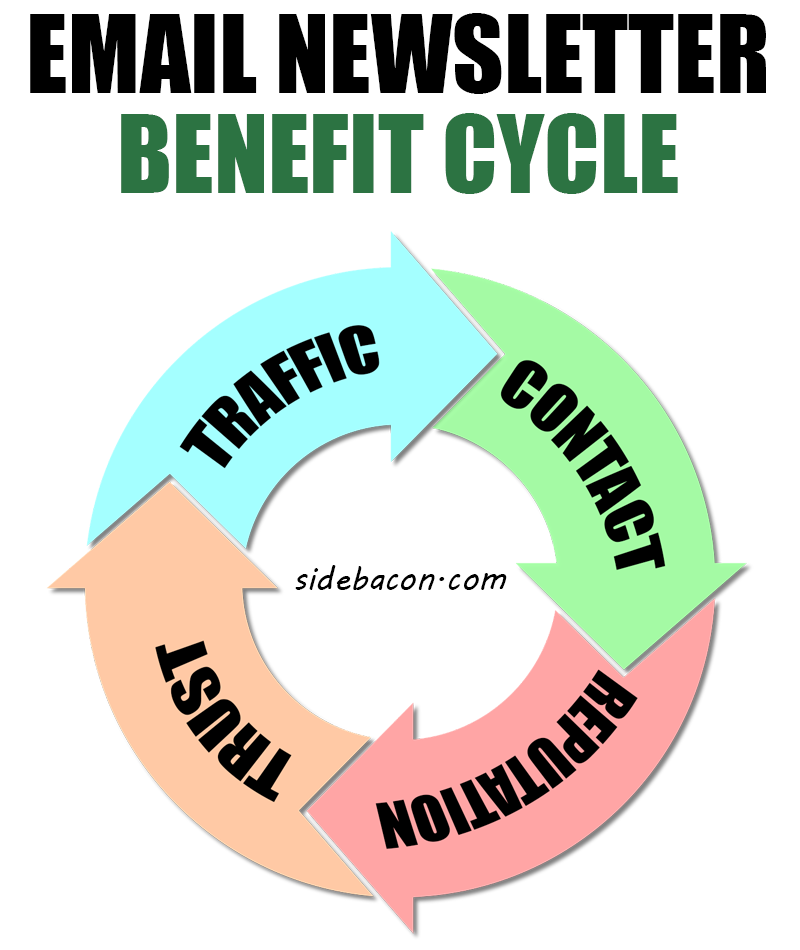
Below, I have made a partial list of some of the benefits it can deliver.
Email Marketing Benefits
- Targeted Traffic
The ability to drive traffic on-demand to any website is a guaranteed way to increase your business revenue. - Recurring Contact
When someone joins your newsletter, you have their permission to contact them by email (as long as they remain a member). This means you get the opportunity to sell to them again and again. - Brand/Name Recognition & Trust
As people get used to reading your emails, buying your products, and buying products you recommend, they become familiar with your name and/or brand. This builds a relationship of trust between you and your readers, which makes it much easier to sell them a new product in the future (just don’t abuse that trust).
These basic benefits and advantages are much more than you can get from a website alone or even on social media.
If you have ever had success with referring affiliate sales or even sales on your own products, just imagine having the ability to contact every customer you’ve had or every person that visited your website.
Instead of churning through thousands or even millions of people to find new customers, just build an email newsletter list that is interested in your niche and you can continue to sell to the same people.
This free training course is going to teach you everything that I know about email marketing so you can start to utilize this power for your online business. This will provide you with more than enough knowledge and expertise to make a full-time living with a
newsletter list – you just have to do the work to build it.
Email Marketing Essentials
Losing Subscribers
If you truly want to build an amazing newsletter list and minimize the number of unsubscribed readers, there is one simple secret that you can follow. Don’t EVER send out an email with the sole intention of selling something.
I’d be willing to bet that you are currently subscribed to at least a few newsletters run by huge corporations. Take a closer look at their emails. You will hardly ever find an email that is ONLY trying to sell you something.
Have something useful and/or interesting to talk about in EVERY email you send. If you have something to sell, treat it like an advertisement on a website. As long as a reader has something to look at in each email other than an advertisement, they are many times more likely to avoid your unsubscribe link.

Remember This: No matter what you do, people will unsubscribe from your list.
Just out of curiosity one time, I gave away an entire paid training course for free in an email – no signups or anything, just a direct download link to the packaged course. I had sold the course for $197 to hundreds of people with a very high satisfaction rate. I still had a couple of people that unsubscribed from that email.
When you worry too much about people leaving your list, you will start making bad decisions to try to stop them. Those actions often result in more people leaving. Keep growing your list over time and ignore those that decide to leave it.
Best Free Email Newsletter
For many years, I ran a newsletter list using free software on my own server. I used to talk about the useless paid email marketing services (autoresponder accounts) like MailChimp, Aweber, GetResponse, Constant Contact and others.
Guess what? I was horribly wrong.
I know that this step is one that many of you will try to skip, but it will haunt you later if you ignore this next piece of advice.
PLEASE, continue reading this section very thoroughly and don’t skip it though – it is some of the best advice that I can EVER give you on email marketing.
I want to tell you the story about how I switched from free email marketing to paid (monthly subscription) email marketing.
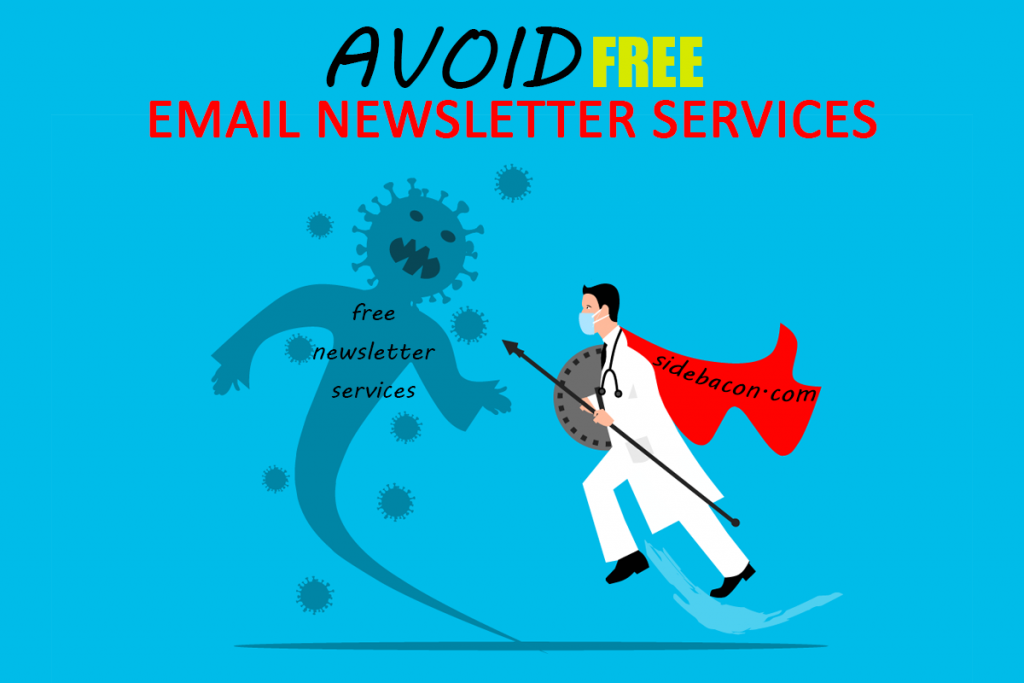
As I said before, I spent years being frugal by avoiding very affordable email marketing subscription services.
Email marketing had never been a very big percentage of my monthly income, but one year I began to put some focus into building a new email list.
The list effort was going extremely well, although there were a lot of unconfirmed subscribers.
One day I announced a special giveaway that I had planned for the following day. The next day, I ran that giveaway promotion as promised.
As you can imagine, I was shocked to wake up the next morning to an email from a rather irate loyal reader of mine. They expressed their disappointment in not receiving the promised promotion.
I quickly replied to the email to let them know that I did send the giveaway promotion and asked if they would look for it again. Sure enough, they had not received the email.
Upon further inspection, I stumbled upon a pile of failure notices from my newsletter email account. There were literally thousands of them.
I looked at them to see what was going on and that’s when I discovered something that completely changed my views on email marketing.
Almost all of the failure notices were failed delivery attempts, mostly because of high incoming and/or outgoing mail volume.
Many of the emails were my daily broadcast emails but a decent percentage were confirmation emails!
That’s right – people requested to join my newsletter and NEVER received a confirmation email.
I am not inflating this number. I lost more than 50% of my subscribers because of it. It was over 500 people that never received a confirmation mail.
Since I had started the newsletter, I was making around $5,000 monthly profit from my emails. Just imagine the sinking feeling I had in my gut when I realized it could have easily been twice that amount if I hadn’t been trying to cut corners.
Which email marketing service is the best?
At this point, I immediately started checking out paid email marketing companies, starting with the well known names that I’ve heard over the past few years.
After thorough research and investigation, I decided to go with AWeber.
Even after everything that I just said, there’s one final reason why you absolutely HAVE to follow this step.
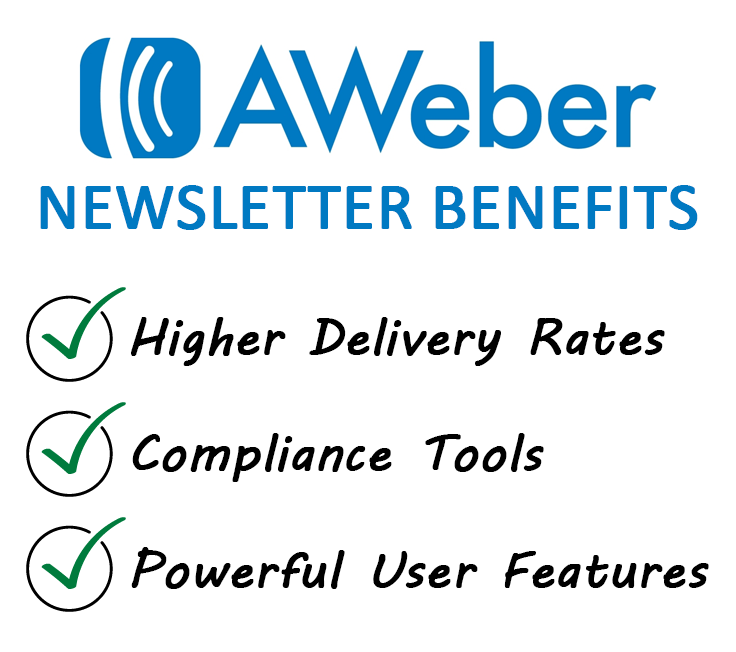
When I went to switch my newsletter to AWeber, I had to get ALL of my subscribers to RECONFIRM their email addresses!
This IS NOT intended to give you a negative opinion of AWeber. In fact, you can’t get better than AWeber, but you have to START with AWeber to avoid problems.
These opt-in rules allow AWeber to guarantee email delivery rates higher than the competition and it is essential to get every single mail to it’s destination.
So, after I realized I lost half of my subscribers, I ended losing ANOTHER half of my confirmed subscribers when I switched over to AWeber.
To rub it in a bit more, I could have avoided all of that trouble for $19 a month.
That’s a tiny price to pay compared to the money that I lost trying to save that $19 a month. After I switched, I realized AWeber instantly gave my list a more professional look and allowed me to have much better control over my mails.
Join Aweber
Now, here’s what I want you to do. If you already have an account with AWeber, great!
If you have an account with ANY OTHER email marketing service, cancel your account and get an account with AWeber.
I am an affiliate of AWeber. If you would like to use my affiliate link to create your AWeber account, I would greatly appreciate it – I will receive a commission if you buy through this link:
Aweber Affiliate
If you have a vendetta against affiliate links, you can join on your own and not hurt my feelings:
Aweber
Other than an autoresponder account with AWeber, you just need a domain name, a hosting account, a website and a niche to start building your first list.
The next few chapters will cover these additional requirements in more detail.

Chapter 3 Checklist
- Join AWeber Autoresponder
- Avoid Sales-Only Emails
Email Marketing Niches
Selecting a niche is another important aspect to running a successful list. Niches are topics or categories. Your newsletter needs to focus on a specific group of topics to make it easier to gain new audience members. This also makes it easier to sell to your readers.
This blog has three main niches: side hustles, personal finance, and investing. While they’re different, they are all about helping people manage their money and make more of it. Money could be consider a fairly general niche for the whole website. This is the clear focus that is necessary to attract website visitors to sign up as newsletter subscribers. I would recommend for a beginner to narrow down their focus as much as possible. Something like “side hustles for single moms” would be a much easier niche.
Key Strategies for Niche Selection
- Choose a niche narrow enough to keep most subscribers interested in the topic. However, you don’t want to get too specific or else you can run out of topics to discuss.
- Alternatively, if you choose a niche that is too general, you will notice a number of negative effects. These include low mail opening rates, low conversion rates and increased loss of subscribers.
- Choose a niche that can be monetized. You need something you can sell to your list. You can sell your own products or refer affiliate sales. You don’t want to get stuck with a niche that only has one product to promote. Once people buy that one product, many of them will unsubscribe from your newsletter if they feel like you have nothing left to offer. See the ‘How to Monetize Your List’ chapter for more in-depth information on how to monetize your niche.
I cannot tell you what niche to choose for your newsletter, because there is not a single answer for any given person. However, I can offer some good advice when it comes to selecting a niche for yourself.
99% of new internet marketers, especially those interested in affiliate marketing, tend to go after the internet marketing niche. Personally, I run my best newsletter in the internet marketing niche, but I may be an exception to the rule.
Most people will find that the competition is too tough and that they don’t have anything unique to offer. Remember, in order to get people to join your newsletter and remain a member, you have to offer them something that they can’t find somewhere else. If you are new to internet marketing, you will likely have a lot of trouble running a newsletter in that niche because you don’t have the proper experience to share with your readers.
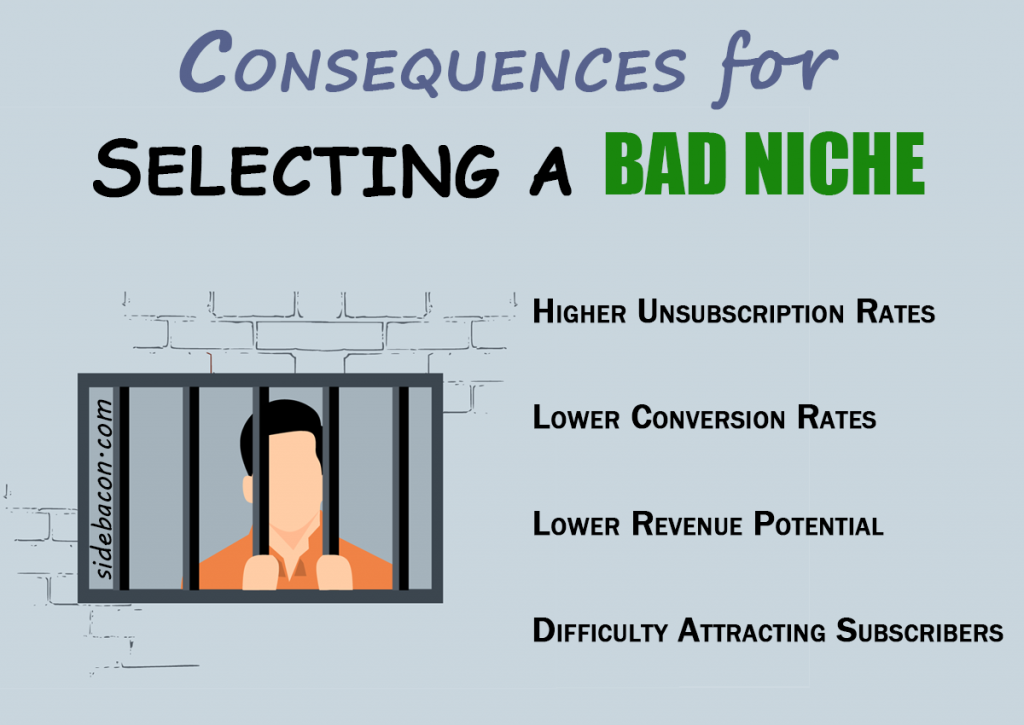
My best niche advice is to stay away from the internet marketing niche, unless you already make a decent amount of money doing it. If you do make money that way, then you’ll have something unique to offer others.
Don’t pick your niche because it is something that everyone else likes or because you think you can make a lot of money with it. Nearly all successful lists are controlled by someone who has a lot of knowledge and experience in their industry.
What do you love and what do you know?
I often recommend that new internet marketers go after a niche related to their current/previous career offline. Yes, I know you want to get away from that horrible career, but the fact is that you probably know a lot about it.
Another option is to pick a hobby. Something that you are passionate about can be important. The most successful marketers work long hours for years to build their business. It’s tough to do that when you don’t enjoy it.
When you have a lot of knowledge and experience with a niche, you can easily come up with new topics over and over again. You truly need to be able to produce a lot of content on your niche to succeed long-term.
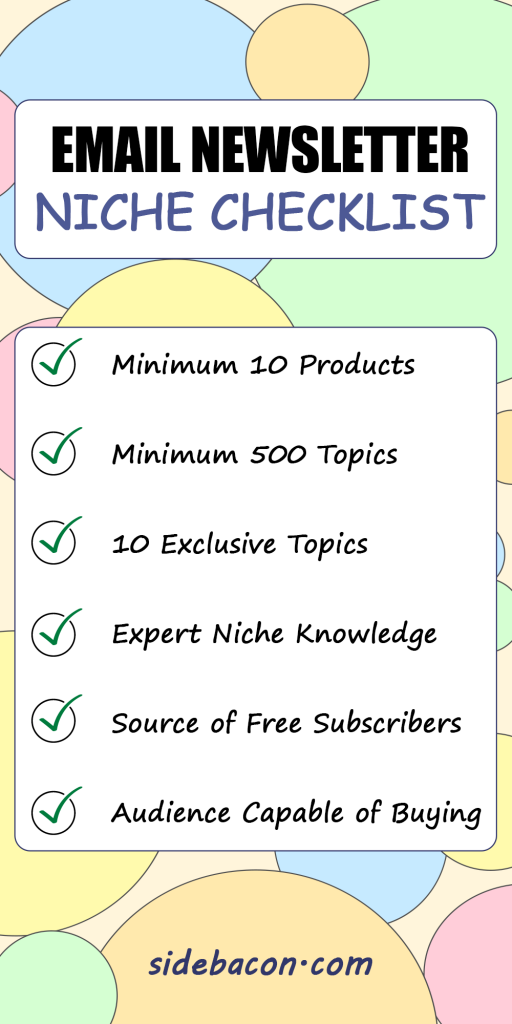
I have put together a niche checklist below. When you think you have selected a niche, run through each of the items on this list.
If it fails to meet ANY of these criteria, you should seriously reconsider your niche before you move on. If you fail the checklist, you don’t have to abandon your niche selection, but you should make changes to it in order to comply with each item on this list.
Following this step will ensure that your newsletter niche has the potential for long-term success.
Niche Selection Checklist
- More than 10 products/services to promote (your own products and/or affiliate products). It helps if more will become available as time passes.
- More than 500 topics of discussion, minimum. If you talk about one topic every day, what do you talk about when your list is a couple of years old?
- At least 10 juicy topics that you have a lot of knowledge about and are willing to reveal your info for free. If you have knowledge about a topic that is not commonly available online, this makes a great opportunity for a newsletter niche giveaway. These giveaways can be used to gain new subscribers, build reader loyalty, and / or retain existing subscribers.
- If you will be making your own products to sell, you must have expert knowledge on numerous related topics to allow you to continually release new products to sell (one new product every two months is generally a safe minimum). You either need new things to sell or a constant source of new leads.
- A source of free subscribers (see ‘Building Subscribers For Your List’ chapter for more info).
- An audience that is capable of making purchases (ie, a newsletter on toys should target parents and NOT the kids).

Chapter 4 Checklist
- Research & Select A Niche For Your Newsletter
- Cross-Check Your Niche Against The ‘Niche Checklist’
How to Monetize Your List
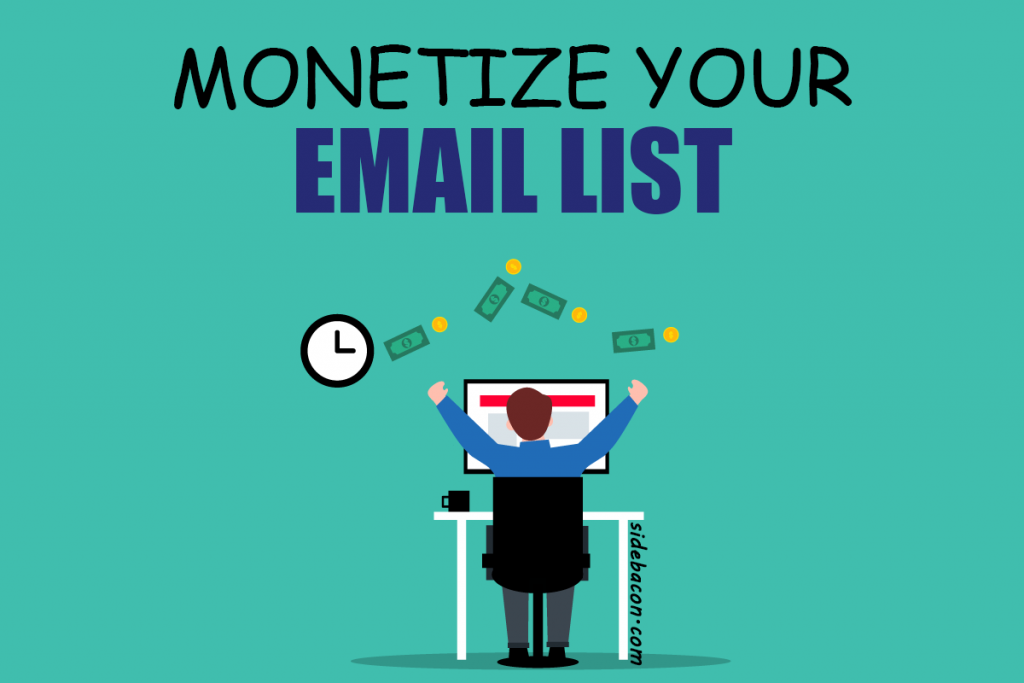
There are two basic ways to monetize email marketing: sell your own products or sell products for someone else (affiliate products).
There are certain advantages to selling your own products, but you can still run very successful newsletters selling affiliate products. You can sell a combination of both.
Within each category, you can also have physical products that have to be shipped and digital products that are downloaded instantly. There are even services, both physical and digital, that can be sold. Ultimately, it doesn’t really matter what type of product you choose to promote, as long as it fits your niche and is appealing to your newsletter readers.
My main focus for this chapter is to talk to you about those two basic categories to give you some tips, advantages and disadvantages of each category.
Selling Your Own Products
Whenever possible, you can easily make the most profit by selling your own products instead of affiliate products. Unfortunately, this is simply not an option that is available to everyone.
In order to truly be successful selling your own products, you must be able to produce something original that has significant value. If you can only re-hash information from others, I highly recommend staying away from this option even though the money can be appealing.
Generally, you need to be successful with something else to be successful producing your own products. People want to buy things from experienced individuals. They either want to learn from the experienced person or they want to gain some kind of benefit from that person.
There are truly too many people on the internet today trying to sell products that talk about business ventures that they have never even tried. You don’t want to be in a position where you have to lie about who you are to sell your products. Beyond being the ethical choice, it’s also the legal choice, which is something that you simply cannot ignore if you want to be successful long-term.
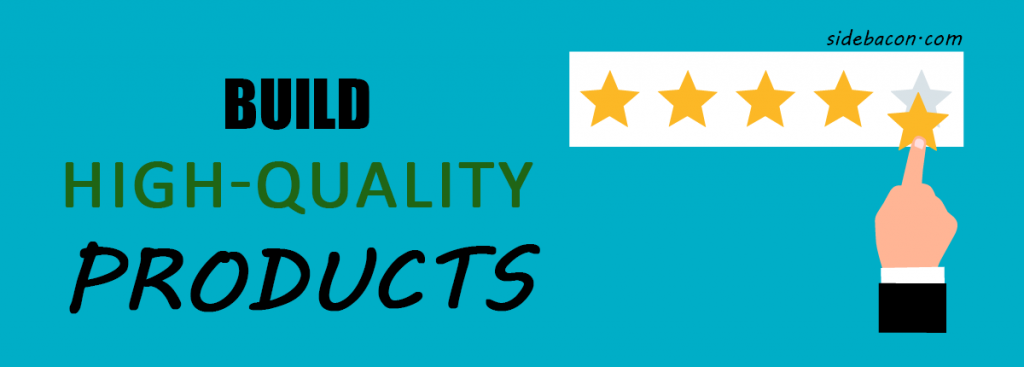
When you sell your own products, you must maintain higher standards than affiliate marketers because you can only have one real name. If you wouldn’t be willing to take money from a close friend for your own products then you should not be trying to sell those products to others.
It’s simply too easy for a customer to request a refund these days if they are unsatisfied for any reason. If you’re selling a digital product and have to refund that purchase, you will always wonder if the person actually kept your product and used it anyways for free. This means that you have to limit yourself to producing high quality products.
I mention refunds/chargebacks because they are a concern for quite a few people that try to make money online. I honestly don’t worry about it – AT ALL!
How can I not worry about refunds/chargebacks? My focus is always on producing a useful product that has real, unique value. In addition to that, I refuse to make false claims about my products to attract more sales. You may feel like it is a better option in the beginning, but you will quickly change your option as the refunds start to pile up. Even worse, if you already spent the money you made, you’ll hate yourself for those refunds for a long time to come.
When you sell high quality products that are not over-hyped, you benefit in numerous ways. Yes, it takes some extra work to actually do a good job, but trust me when I tell you that it’s worth it.
The obvious advantage is money. For some of you, that may be your only goal. It may seem like a silly concept to you, but if you want to make money online then you will find the most success when you actually STOP trying to make money. Instead, put your time, focus and energy into helping others. That’s right, I used bold, italics and underline for that phrase!
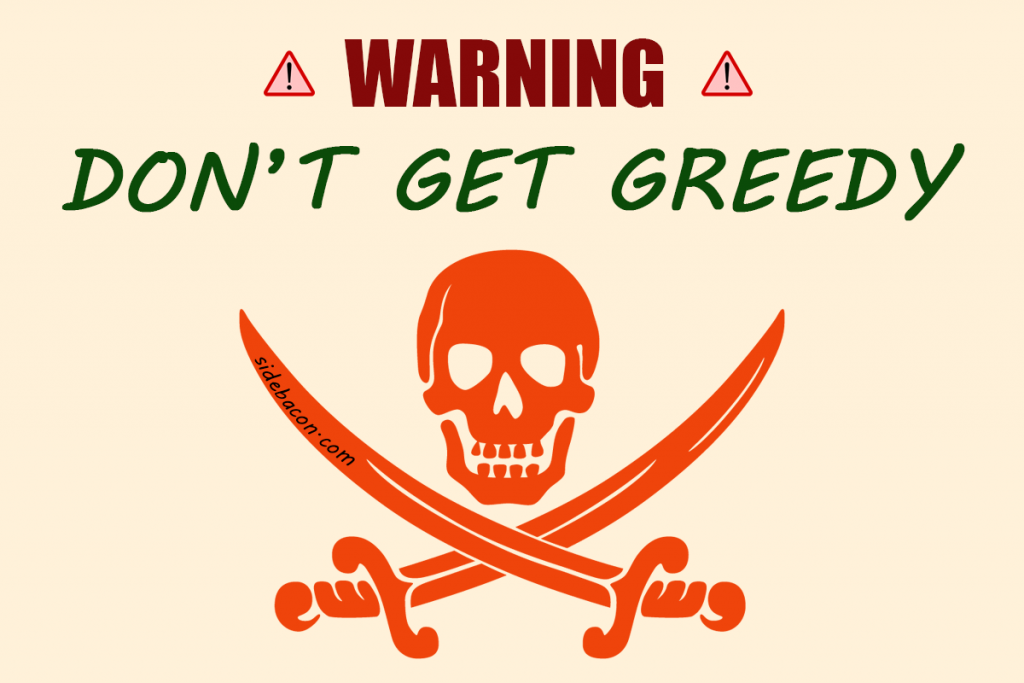
The best example ever (and still a horrible on-going problem online today): If you are making a product to help others make money online, why would ANYBODY ever considering selling false hopes and dreams? I only have two answers for that: greed and narrow-mindedness.
I put so much emphasis on talking about quality because that is the real key to turning a one-hit wonder into a classic. Ultimately, I don’t think that my techniques would be as successful without quality to back it up.
It can be frustrating when you first start to sell your own products because it can be difficult to build a name for yourself. Most people will not just run around the internet talking about how much they loved your product, even if they truly did love it and gained a lot from it.
Do not give up if you do not find immediate success. It can sometimes take 6-24 months of consistent work before you turn a corner where success becomes much easier to achieve. If you are able to sell your product to a small handful of people and everyone is happy with it, then you need to feel good about it. This is especially true if you are not able to market your product to a very large number of people.
As I mentioned before, even your happy customers may not help to spread the word, especially if you are in the internet marketing niche. If you truly feel like you have been able to gain amazing knowledge, tricks and techniques from an internet marketing product, why would you want to tell someone else about it? Most marketing strategies are simply not as effective when they are heavily reproduced.
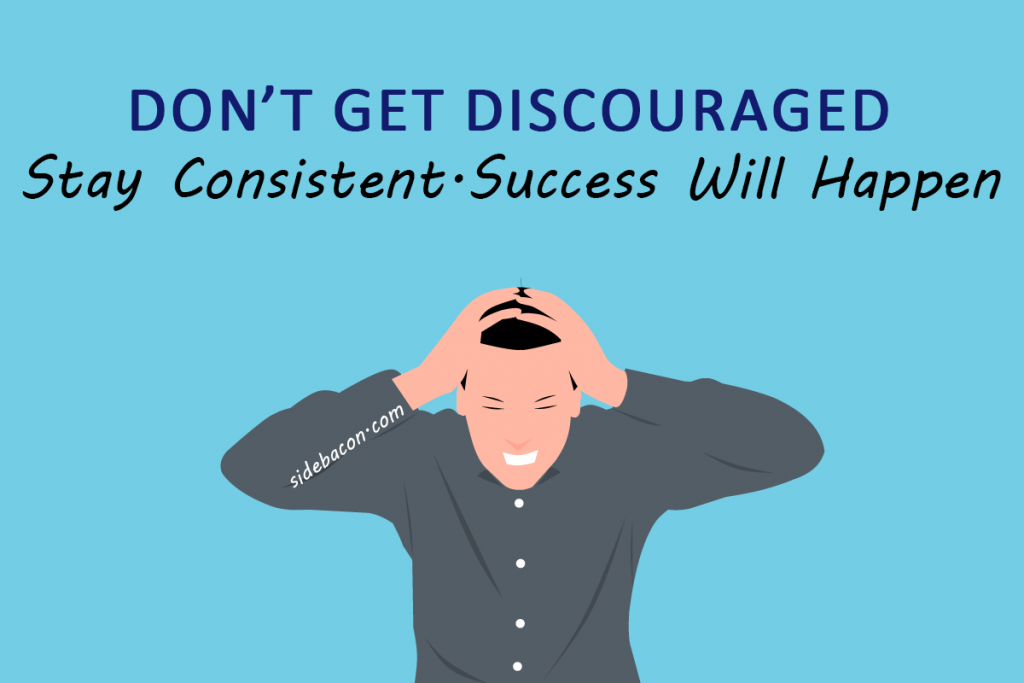
The bottom line is this: if you can generate sales with a reasonable amount of traffic without producing many refunds/chargebacks, then you should continue producing your own products and trying to sell your existing ones.
The good part about producing high quality products is the loyalty that you build and the repeat business that many of your satisfied customers will give you. Don’t get discouraged about what I said before because there are some customers that become very loyal and will start to help spread the word about you and your products. You just can’t expect it from all of your satisfied customers and you certainly shouldn’t depend on it to market your products for you.
When you are running a newsletter, it gives you a great way to keep your loyal customers informed about your new and existing products. There seems to be a different crowd of readers that will join this type of newsletter compared with an affiliate based newsletter. These readers are generally smarter and/or more educated than typical internet browsers. Getting information direct from the source is often the best way to go.
Many of them are quite aware of what an affiliate ad looks like, which is probably why they have joined this type of newsletter to get it straight from the source. They are aware that many of the affiliate marketers are simply trying to sell, sell, sell whereas people that produce high quality products generally have better intentions.
For this reason, you may find that some of your readers will unsubscribe if you try to promote any kind of irrelevant affiliate product. I do find that it’s OK to promote useful affiliate products that I actually use myself, since I have personal knowledge to share about those products.
Selling Affiliate Products
There are many different ways that you can try to sell affiliate products with a newsletter, but the actual method is not what is really important. What’s important is that you have something unique to offer.
Promote highly relevant, useful products that are the kinds of products that you would want to make yourself. NEVER promote an affiliate product just to try to land a sale.
One of the best ways to sell affiliate products is by actually trying the products yourself. While this technique can give you a unique perspective on selling the products, it can be out of reach for many beginners because of the money required to buy the products yourself.
Don’t buy and review products just to do so. Go after products that really seem to stand out with something special to offer. When you promote an affiliate product that you truly believe in, your readers will pick up on it and be much more likely to buy through your affiliate link. This is how you can make a connection with your readers in a similar manner to selling your own products.
When you have a track record of sales, vendors will usually give you their product for free to review. This means you don’t have to spend anything to be able to provide in-depth and useful reviews to your readers. Contact vendors when you sign up as an affiliate to see if this is possible.
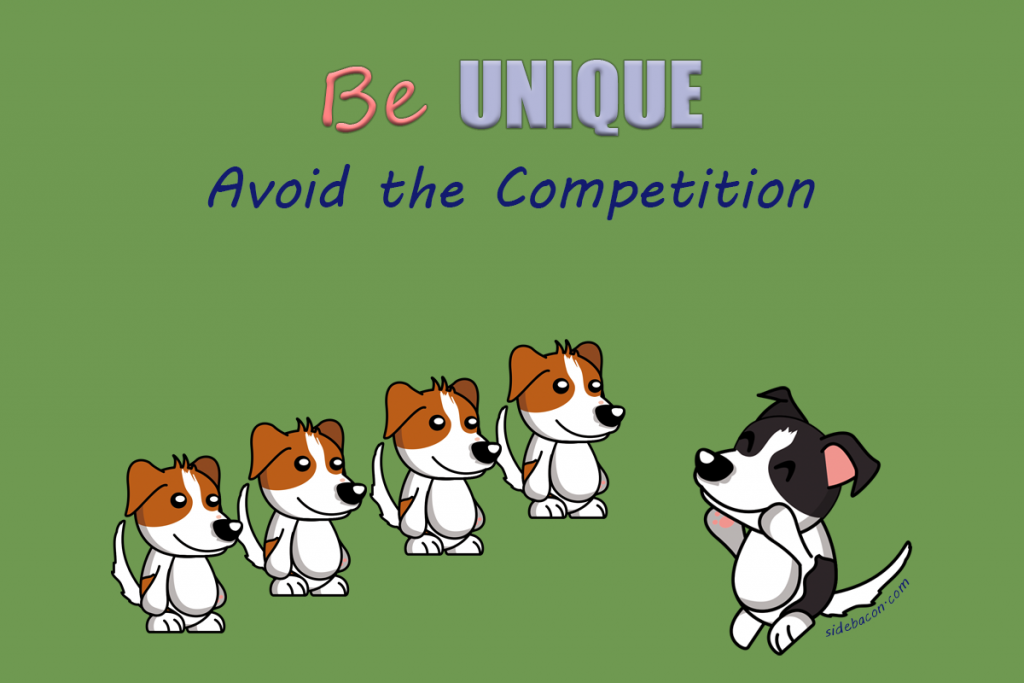
A major disadvantage to selling affiliate products is the competition.
Generally, you get to sell a product at the same price as everyone else, so there is nothing up-front to set yourself apart from everyone else. As an affiliate, you’re at the bottom of the pyramid while the guy selling his own products is sitting at the top.
However, don’t let these disadvantages completely turn you away from affiliate marketing because there are some equally appealing advantages too. Although you only get a percentage of each sale that you refer, you actually get to enjoy some benefits at the same time.
There are also ways to overcome some of these downsides. One strategy I’ve used with a lot of success is to make my own training course to go along with the product I’m going to promote. This gives your customers additional value and a unique bonus when they purchase through your link. This sets you apart from other affiliates.
Ultimately, you’re not responsible for the product as long as you have referred it’s sale without making false claims. You do not have to provide any kind of customer service on these sales.
One of the best advantages is time. It takes a lot of time and hard work to put together your own product to sell. As an affiliate, you can simply pick and choose existing products to sell. You can decide to sell something and start selling it a few moments later. When you produce your own products, this process can easily take weeks, months or even years.
My main newsletter sells my own products and a couple of relational affiliate products that I actually use and recommend. As I said before, you can sell only affiliate products, but to be successful long-term you will need to do something to set yourself apart from other affiliates.
When you pick affiliate products to promote, you want to make sure that you do not pick the products based on the amount of money that you can make from each sale. You will often that find people selling poor quality products will offer higher commissions, while the high quality products will generally give you lower commissions. There’s a good reason why it is like this: high quality products sell themselves while low quality products need some extra help. Promote what is best for your customer instead.

Chapter 5 Checklist
- Decide What Your Newsletter Will Sell
- Choose Highly Relevant Products To Promote
- Only Promote High Quality Products
- Help Others First, Make Money Second
Autoresponder Creation
Once you figure out your newsletter niche, you can begin to create an autoresponder. The autoresponder account on Aweber will allow you to do a number of things. You can customize your confirmation and/or welcome emails, as well as make changes to a number of different settings based on your needs and preferences.
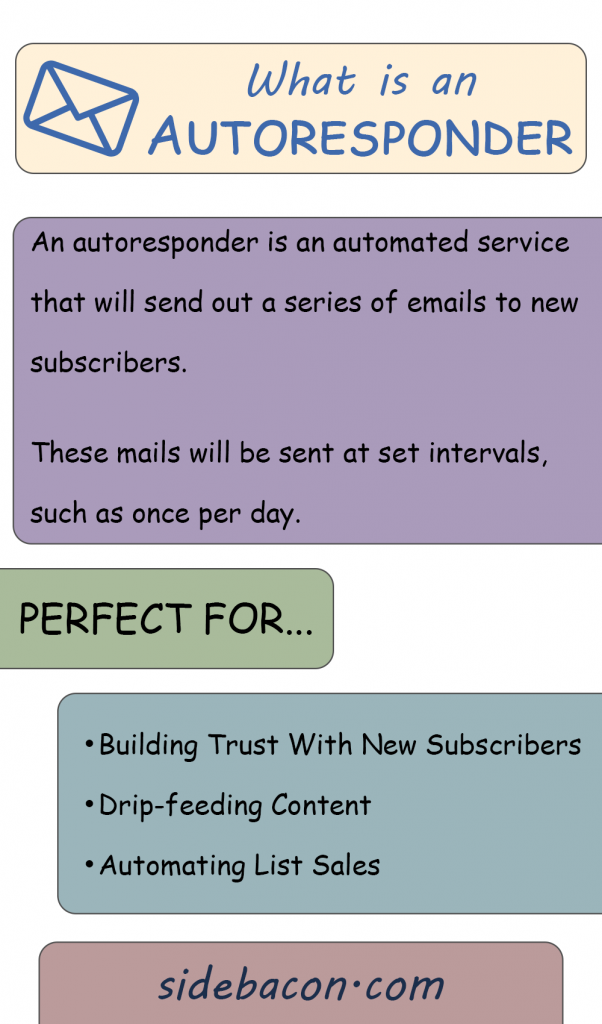
What is an autoresponder?
Email newsletter services let you set up a campaign sequence of emails that will get automatically delivered to new subscribers to your list. This allows you to automate a series of messages to build loyalty and even to drive sales. An autoresponder can be scheduled to send one email each day until the follow-up sequence is completed. I’m going to discuss a number of benefits and strategies for using them to increase reader loyalty and revenue.
The most important part that I want to talk about are your ‘Followup’ autoresponder emails. These are emails that you will want to create BEFORE you attempt to get the first subscriber for your list.
There are tons of different strategies that you can try with these emails. The marketing strategy is not really important here. The real key is to develop a clear plan for your autoresponder emails.
One of the best ways to use autoresponder emails is by developing a course that your readers can subscribe to. Come up with a topic or series of topics that relate to your niche and offer a high degree of appeal. As an example, free training lessons are an appealing way to get people to join a newsletter.
Instead of giving your readers everything they are looking for in a single visit, autoresponder campaign emails allow you to slowly release that information to your readers.
Autoresponder Objectives
There are a few different things that you can try to achieve with your autoresponder emails:
- Build reader loyalty
- Get readers used to opening mails at a certain frequency (daily, for example)
- Build suspense/desire for a lifestyle or particular products
- Make Money with direct and/or affiliate sales
Your autoresponder mails are generally your best shot at making a good impression with a new subscriber. If you immediately bombard them with sales offers without anything useful, you can easily lose subscribers as quickly as you gain them. Use these mails as an opportunity to build reader loyal and to get them familiar with your name and/or brand.
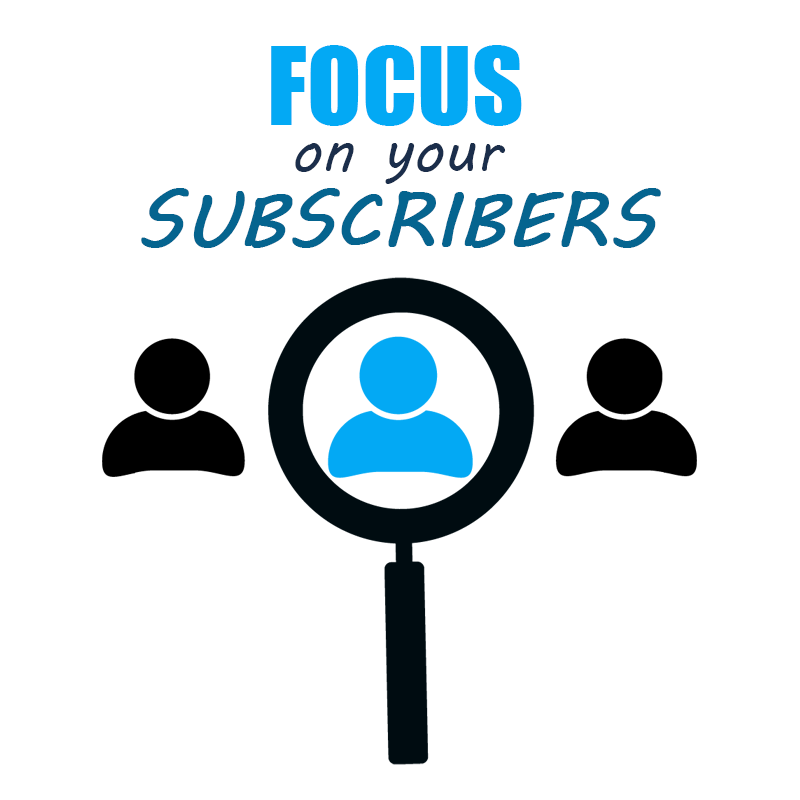
Many email marketers will tell you to wait 14 days until you hit a new subscriber with a sales email, but I don’t necessarily agree.
Have you ever noticed how those same marketers will hit you with sales offers when you join their newsletter?
The truth is that you can advertise to your readers whenever you want to, as long as it’s not the main attraction.
Personally, I like to use AWeber’s email templates for this purpose – many of them have excellent ad locations that compliment content areas. Plain text emails are also okay to use and can have better delivery and open rates.
If you follow this strategy, you can create a free training course for your autoresponder mails and advertise your paid training course in every single mail.
The people that want to buy the training course will be able to do so in a non-invasive manner and the people that want the free information will be able to do so without wading through advertisements. It’s simply a win-win situation that will help you retain existing subscribers and help you gain new subscribers through word-of-mouth advertising.
Setup Autoresponder Emails
I recommend to create 20-30 useful emails that can be used as your initial autoresponder course. You can mention the basic contents of these emails to attract new subscribers.
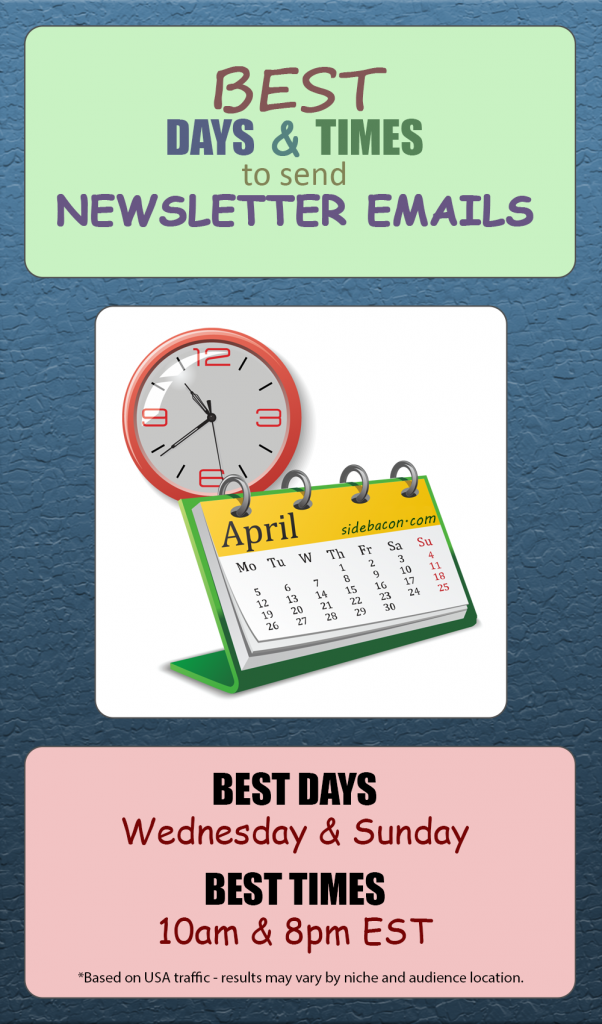
These emails can be helpful information relating to specific topics, which can them be used to promote relational products.
You can also make emails in a series format, where each new email builds on something offered in the previous email. At the end of the course, you build to a final point that then tries to land a sale.
Yet another option is to use a suspense strategy. With this strategy, you give the reader a lot of information about a subject without the most important piece. You build suspense with the reader, leading them to desire that last piece of information that ties everything together. When this last piece of information is available in a paid informational product, it’s often a very good way to convert readers into buyers.
How often should you schedule autoresponder campaign mails? To a certain extent, you want to send fairly frequent emails to your readers, but there are a few things to keep in mind. I generally recommend to avoid sending more than one email per day. In many cases, you’ll find that readers will still unsubscribe even if you send emails every other day.
The trick is to figure out what works best for you, your readers and your niche. If you can’t produce daily emails reliably, don’t set up your autoresponder emails to be sent daily. If your readers are annoyed by frequent emails, try to reduce your frequency a bit.
Above everything else, pay attention to your niche. Put yourself in your readers place and try to figure out why they joined your newsletter. Some niches may work with numerous emails every day, while other niches would be better with an email every month. If you only have a few products to promote, you will likely want to keep your email frequency fairly low.
To sum things up, your initial autoresponder emails should show your readers why you deserve their time. If you can gain their loyalty in these initial emails, you are much more likely to retain them as future subscribers and future customers. Just make sure you don’t exhaust your resources trying to win them over in the beginning because you still need to keep your readers interested long-term.
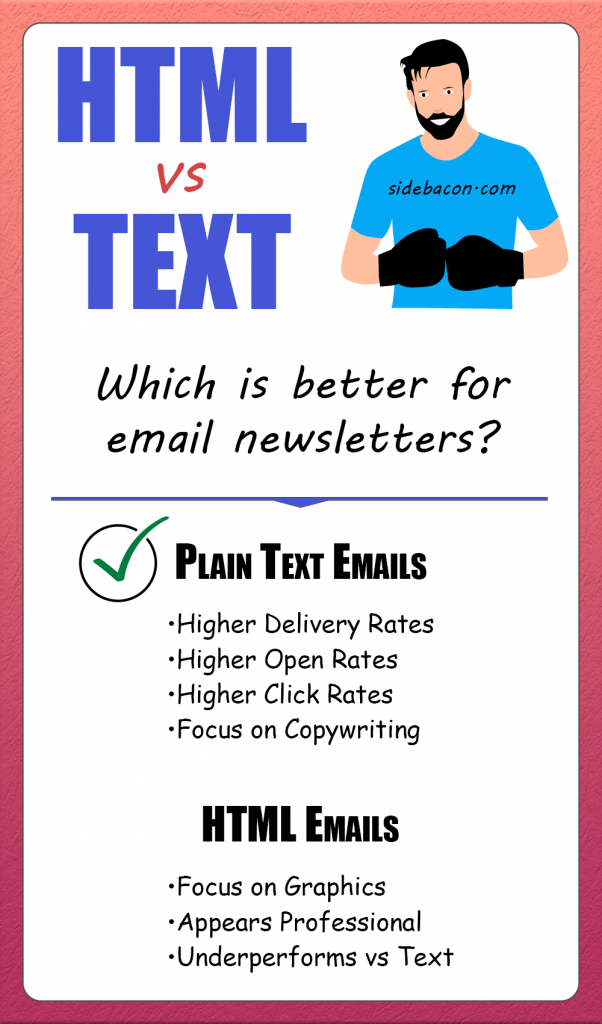
Text vs HTML Emails
I talk a lot about using HTML templates for emails in this lesson. However, I want to emphasize that this is not necessary. In fact, plain text emails can actually be better in many cases. Try both and see what works best for you and for your readers.
Sometimes keeping an email short can be better when your goal is to drive traffic to a single web page. The real information that a reader wants to reach could be located on your website, while the email is more of a teaser to get them to visit. This tactic works exceedingly well and can even be used to direct readers to a sales page.
Ultimately, you should choose what works best for you and your readers. Maintain a focus on quality no matter what strategy to decide to use.
Email Newsletter Design Examples
Before I conclude this chapter, I want to show you a sample newsletter email that I wrote. I’m going to go through this newsletter and explain some of the important areas. This should help to give you a good idea about the newsletter quality that I am talking about and it shows you a great way to advertise without being invasive.
My example newsletter is NOT an email that I have loaded into my autoresponder, but you can use these same techniques in your autoresponder mails and/or newsletter emails. The most important thing to remember for your autoresponder mails is to keep a focus that can help lead your readers to a purchase.
My newsletter marketing campaign emails are usually a decent length, so bear with me here. I have split this newsletter into three parts so it is easier to view. As you look at each part of the newsletter, notice where I have marked it with red, numbered circles. Each of these numbered areas are explained below.
This particular example email is old, from 2011. 12 years ago is roughly the last time I used HTML emails. I’ve exclusively used plain text since that time. However, I still wanted to include an example for those that want to try HTML newsletters.
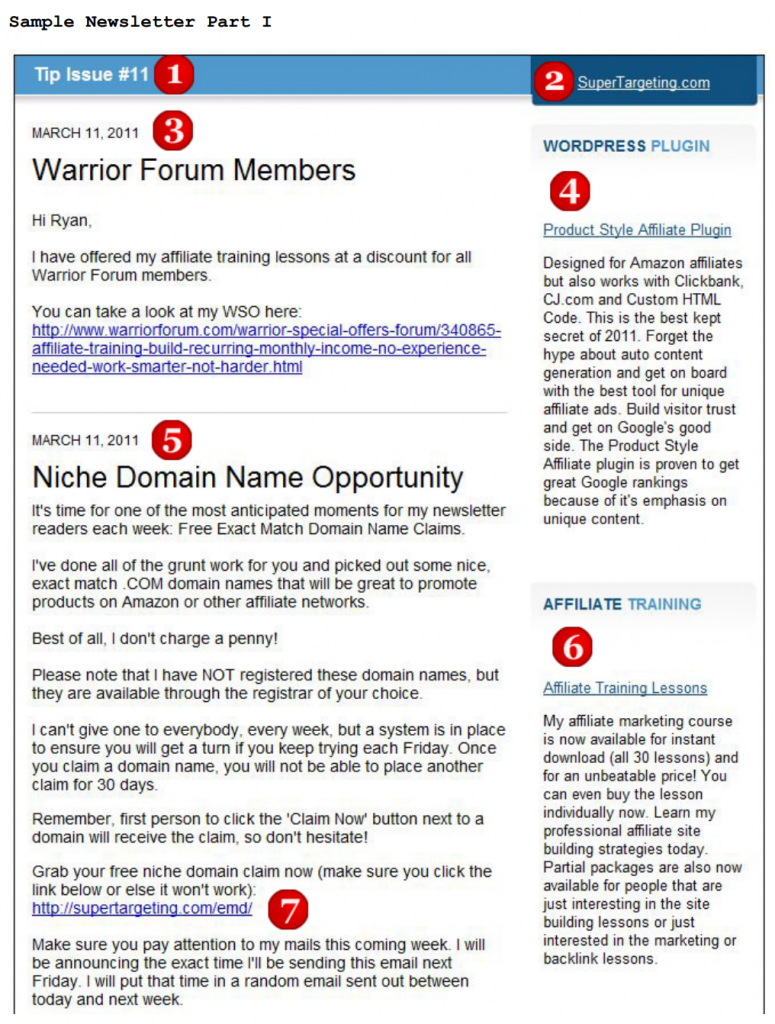
#1. This particular email is actually made with a free email template that AWeber has for use. I use the top line as the title for the email, but you can actually utilize this area for a brief advertisement that will get great exposure.
It’s really up to you what you want to do, but I try to tone down the ad exposure as much as I can. For my “Tips Issues” newsletters, I use something else for the actual email subject. Horribly plain and/or uninteresting email subjects may never get opened by your readers.
Email subject is a major topic for a lot of people, but I feel like this is something that heavily depends on the niche. There are certain words that I can use in my email subjects that are highly relational to the niche. The use of some of those words will almost always help to increase email opening rates.
This is something that you will have to play around with for your particular niche. Figure out what people want to read about in your niche and target those things with your email subjects.
#2. I use this area to advertise my newsletter name and it’s also linked to my home page. There is an indirect opportunity for sales through this link, since my site has pages other than my home page that are used to sell some of my products.
The main reason I put my site name here is for brand recognition. If you really want to build a name for yourself, you could even put your own name here instead of your brand/site name.
#3. This email newsletter actually consists of three different messages. Many marketers would send out this message as three emails, but I have discovered huge benefits to combining the offers (see the chapter on ‘Retaining Existing Subscribers’ for more info).
Take note of the date – it’s an old email. I use a date for my newsletter mails to let people know that these emails are not part of an autoresponder course. I would not recommend using a date with your autoresponder messages or else your site will look outdated as more time passes.
Even if your autoresponder mails are years old, you don’t want to blatantly advertise that fact. It is worth mentioning that if you do use autoresponder mails for a long time, make sure you take a look at them every few months to make sure they still contain relevant information.
The actual message that is in this spot is an advertisement. Ads get really good exposure and results in this spot, but there are a few key points to remember. Above anything else, keep your message sales ads as short as possible.
If you need to give the reader a lot of information to sell a product to them, try to direct them to that information away from your newsletter instead of bogging down your newsletter with it. You also want to make sure that this ad is not overbearing. Don’t shout SELL SELL SELL here! Just say “Hey, I have this.. check it out”.
#4. I like the email templates that use a sidebar, very similar to sidebars used with websites. This is where I put my blatant advertisements. You can actually advertise to your heart’s content in this area, as long as the rest of your email contains useful information that people actually want to read.
This particular ad is for a WordPress plugin I created in 2010.
#5. The middle message in my newsletter is a weekly giveaway that I do for my list. This giveaway is completely free and is likely one of the reasons why some people join my newsletter and continue to stay a member.
I have set out a schedule for this regular giveaway, every single Friday, which allows my readers to get used to looking for this email each week. I regularly get 70% or more of my list opening this email and nearly 100% of the openers will click at least one link in the mail.
You don’t have to give away something for free and you especially don’t want to do it in every email. If you don’t have a free giveaway in a particular email, just omit the middle message.
#6. This is my second ad spot in my newsletter email. It’s the last ad spot that I use in the sidebar, but you don’t have to quit with two ads. I can’t say that I would recommend trying to fill up the sidebar completely, but you can certainly run 3 or 4 ads in each newsletter mail especially if you have a lot of great information in the content of your mails.
#7. I call this the focal point. If you give away something to your readers for free, you will have a focal point in every single giveaway email. This is the point that nearly all of your readers will search for in your mail.
Determine if your email has a focal point and then scroll down to that focal point. DO NOT try to sell things through links ANYWHERE below the focal point. A decent percentage of your readers will likely never go below the focal point, unless they have a reason to do so.
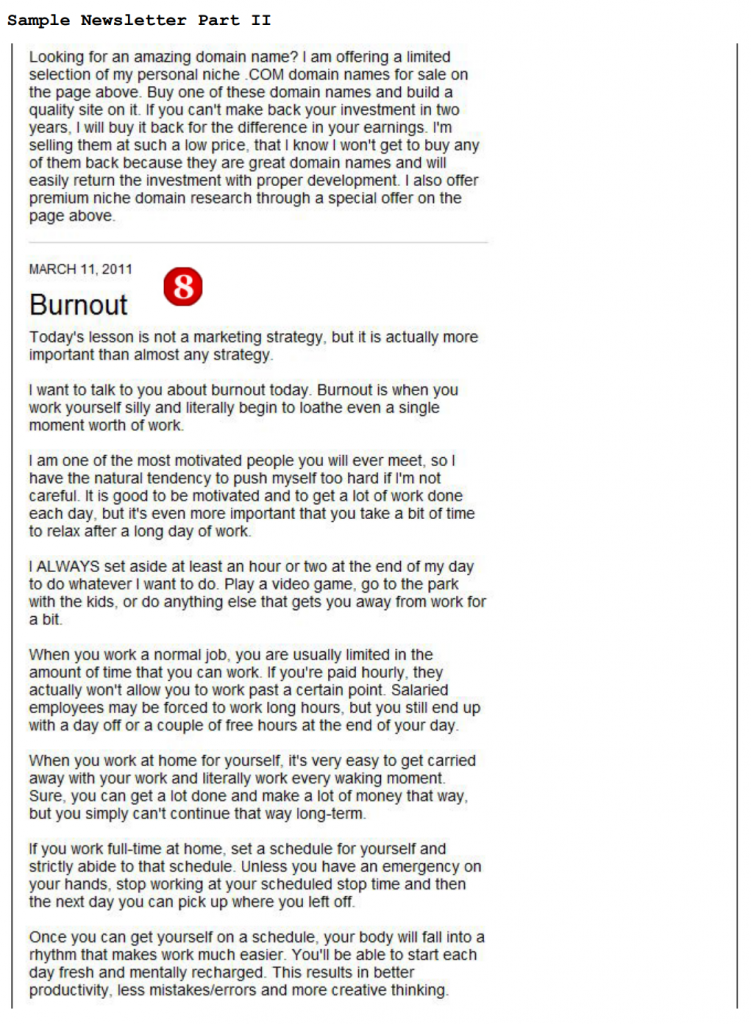
#8. This is the “main content” of the newsletter. If you have a focal point in the newsletter, like a free giveaway, putting this below the focal point gives the readers a reason to finish your email. If you don’t have a focal point, simply put the main content message at the bottom of the mail to increase the chances that people will read your whole email.
My main content of my newsletter is a free training lesson, which can vary quite a bit. Sometimes these lessons are standalone, although I will also come up with series of lessons to use here. Unless you have a way for new subscribers to access past newsletters, you don’t want to make a newsletter lesson series that is too long (4-5 lessons max).
I copy the source code from each newsletter and reproduce it on a page on my site. This allows me to direct text-only email readers to the styled newsletter and it gives me a way to let new subscribers catch up if I am in the middle of a lesson series. This certainly takes more effort on my part and I can’t say for sure if people appreciate it, but I feel like it gives my list a more professional appeal.
Now that we’re at the last message in the newsletter, you can see that I have a particular order for my messages. Sales messages ALWAYS go before the free content. Unless you are willing to risk losing subscribers with every email you send, I highly advise against sending out a single email that is lacking some kind of free information, lesson, tip, etc. Ultimately, a list that only sends out advertisements has no real value to a reader.
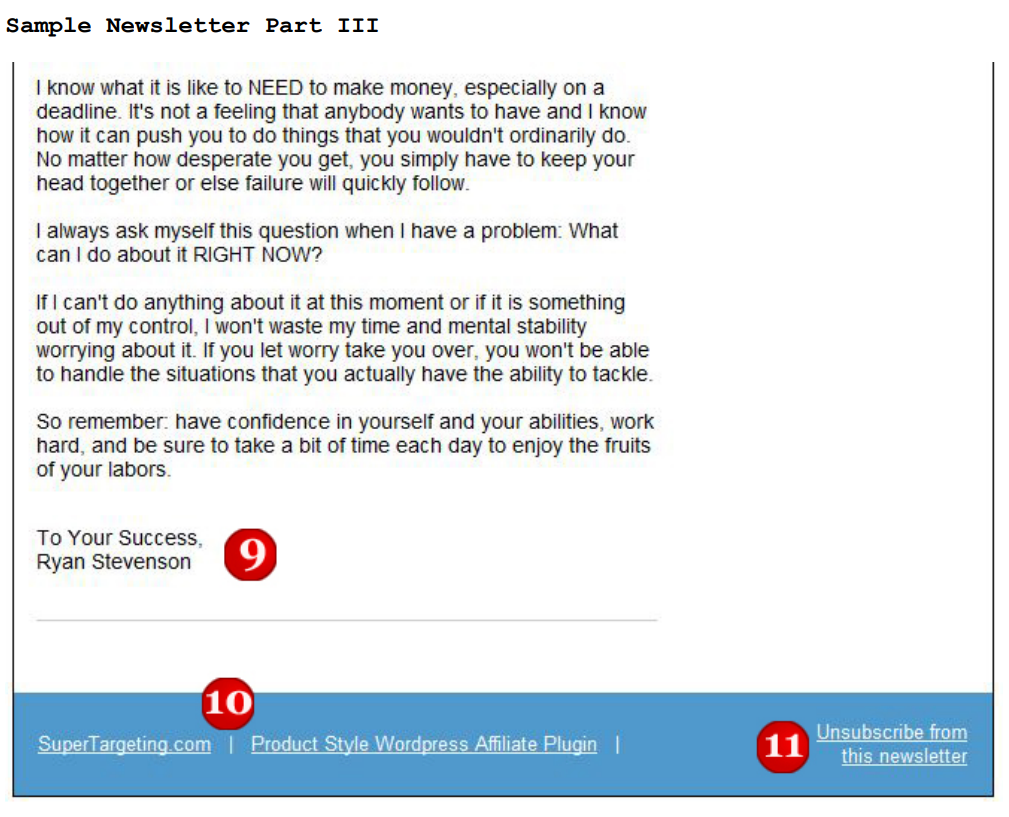
#9. This is the closing for the email. In text based emails, this closing is followed by links to my site(s). For the HTML version of the newsletter, I move the signature links away from my name (see #10). Many people may not think that the closing is significant, but I feel otherwise.
I have two pieces of advice with your closing. Use a sincere closing line before your name, to format the email like a letter. I started using my closing line, “To Your Success” a long time ago when I was helping out a friend with some one-on-one coaching by email. I liked it and thought it expressed by desire to help others succeed online, which is why I do this instead of just sitting back and collecting the monthly checks from my other internet properties.
I also recommend to use your whole name and your real name too. Why? When you put a fake name or a pen name on something, you are disconnecting it from yourself. When you put your real name on something, you take pride in your work and also hesitate to do things that could damage your reputation.
When you work online, you don’t really have anything holding you back from trying to scam a quick buck except for yourself. You have to have willpower and putting your real name on your work can help boost your willpower because failure to produce quality work will then be able to damage your name for good. Think of it as your online boss and the connection between your real world and the online world.
#10. The two links at the bottom of my newsletter mails are my “signature” links. This is where I put the link to the newsletter site and other relevant links for my own sites. I think this helps to split the links from the rest of the newsletter, which users seem to like.
#11. This is the unsubscribe link that a visitor can use to leave my newsletter. By law and especially with AWeber, you’re required to have a link that people can click to unsubscribe from your newsletter. You’re also required to tell your address that you are sending the mail from. Both of these things are actually accomplished by AWeber, whether you want it to happen or not.
I like to include easy access to the unsubscribe link in the main part of my email because I don’t want anyone to feel like I am trying to hide it from them. If somebody wants to unsubscribe from my newsletter, then there is not a single reason that I would want to keep them subscribed.

Chapter 6 Checklist
- Plan Content For Your Newsletter & Autoresponder Emails
- Write 20-30 Intro Autoresponder Emails
- Plan Your Email Frequency
- Help & Educate First – Sell Second
- Use Tips, Techniques & Good Practices As Shown In The Sample Mail
Newsletter Sign-Up Forms
When you’re ready to put your actual website together, I recommend using WordPress to make the process as simple as possible. Construct your pages using WordPress and specify one of the pages to be the main page of your site. If you do not know much about WordPress, I recommend using Google and/or YouTube to learn a bit about it. Using WordPress IS NOT one of the absolutely necessary steps to my strategy, so feel free to make your site another way if it is more comfortable for you.
The main thing that I want to talk to you about in this chapter is the content that you actually put on your website, especially the home page. There are a number of different ways that you can try to get people to join your newsletter. I have gone through some of the best options below to teach you the advantages and disadvantages of each choice. Since I have no idea what kind of niche you might target, I cannot say that a particular method will be better than another. Read through the methods below and try to decide on one that will be the best fit for you, your niche and what you have to offer.
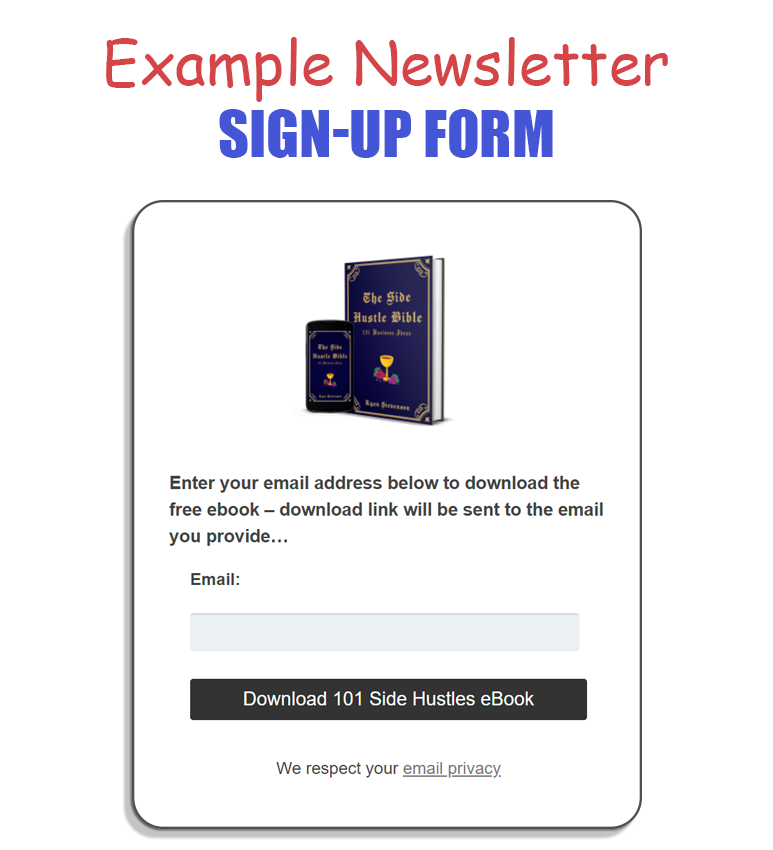
One-Page Method
The one-page method is one of the most commonly used methods to get new subscribers for a newsletter, especially in the internet marketing niche. Even though this is highly used, it does not necessarily mean that it’s the best choice for all situations.
The one-page method uses simplicity to capture a new subscriber. This method works best when you have the single page running as the home page on it’s own domain name. The page contains a minimal amount of information with a concentration on the sign-up form. This page often contains no real value to a potential subscriber, so it is generally promoted from somewhere else (ie, from another newsletter email, articles, another website, forum posts, etc). The external sources that promote this page will often contain content that makes a person visit your site with the intentions of joining your newsletter.
This method certainly converts a high percentage of your site visitors into new subscribers, but there are also disadvantages to using this method. First, you will have to put a lot of work into the outside sources of promotion to generate interest for your site/newsletter. Second, if someone gets to your site through a search engine listing, you’re likely to lose the potential to convert them into a subscriber because they won’t be primed to join ahead of time. This means you will likely have to work to get all of your new subscribers. It can be helpful to have more content on a site to bring in some free search engine traffic.
Personally, I have always thought this method looks a bit cheap to a potential subscriber. There are a lot of people who are used to this method and will subscribe anyways, but I believe you lose a fair number of good subscribers with this method too. These “good” subscribers are people with higher education and higher income, which are often very loyal customers. They can easily be scared off by too much simplicity, which can appear as being cheap or having a lack of experience. If you want to give away something free to get new subscribers (like a free ebook), this method can work pretty good to gain a decent number of readers.
The best way to use this method is to provide a brief amount of information on what the user is signing up for and give them a sign-up box to join your newsletter. The information should describe your free bonus(es), autoresponder course and/or general newsletter information.
If you give away a free download for new subscribers, make sure you mention that they are joining your newsletter along with receiving the free offer. There is nothing worse than getting a new subscriber that didn’t even realize they were joining a newsletter. To avoid this problem, make sure you give enough information to the visitors BEFORE they actually fill out your sign-up form.
You have to use a bit of copywriting with this method to grab their attention, because you want to quickly entice the visitor into submitting their information in your sign-up box. Don’t say anything that isn’t true here, but if you have trouble converting visitors into subscribers you may need to spice up your copy for this page or offer something more appealing to new subscribers.
One-Page Method With Backup Site
This method uses a very similar one-page sign-up method on the home page of the site. However, this method requires you to make more on your website than just the sign-up page. You still want the sign-up page to be a standalone page that will be used to get new subscribers to join your list, but the rest of the site is used to give your newsletter a more professional appeal.

This particular method is used with my main newsletter. I utilize the rest of the site to give away a bit of free information that shows my experience and to sell products that I have produced myself.
I have tried the method above, but I really prefer this method with my own products to sell. I believe you will find the same thing to be true if you are targeting the internet marketing niche.
I often receive visitors to my site that are more experienced internet marketers who may immediately move past my newsletter sign-up form. If that is all that my site has to offer, my site would get closed if they aren’t interested in the newsletter.
This method gives you a way to target a few different demographics within a niche. I often get sales on my own products from visitors to the home page of my site that do not join my newsletter.
It is also a good way to pick up some random new affiliates, if you sell your own products through some affiliate networks like Clickbank. If a more experienced user that runs their own site in your niche is just browsing your site out of curiosity, they may be enticed to promote your products if you advertise the affiliate program publicly.
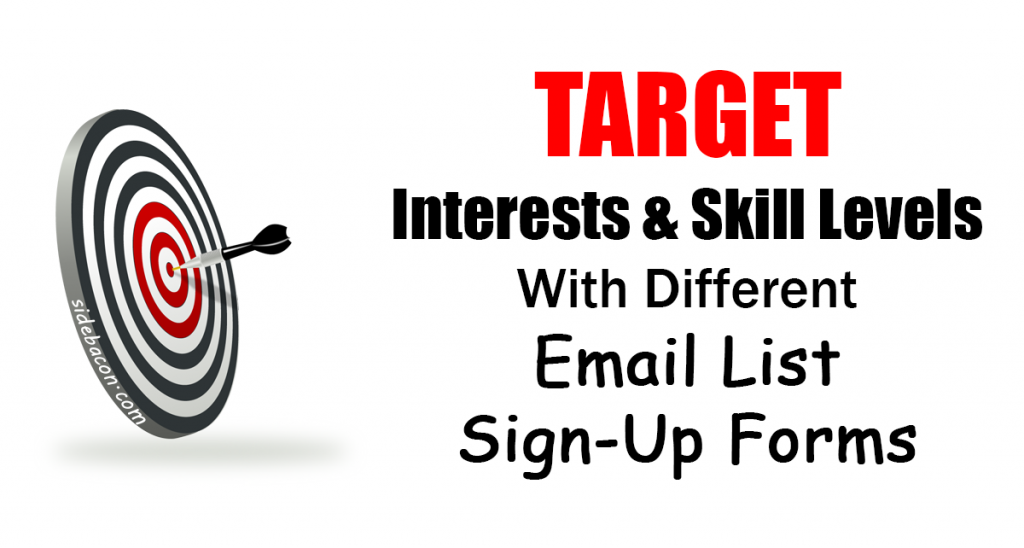
Many internet marketers like to focus a visitor’s attention on a single idea. That strategy works great except that less experienced internet marketers often overlook one key ingredient: targeted traffic. Unless you know a lot about your website visitors, you cannot always predict what will interest them. You may need to create multiple sign-up forms to appeal to different interests.
Highly experienced internet marketers may be seen promoting a single sign-up form. They’re able to succeed with this approach because they send targeted traffic to the site. If you feel like your niche will attract people with a few different interests or skill levels, try to offer them a choice to put them in control of their experience.
I know that my newsletter site visitors will range from complete beginners all the way up to expert marketers, so I try to offer something for everyone. At the very least, it shows my potential newsletter subscribers what I’m about. If you present yourself and your products in a professional manner, this will often work wonders to attract new members.
Sidebar Method
This method is used when your newsletter is NOT the primary focus of the website. A great example of one of these websites is a niche site that promotes affiliate products. I run quite a few of these myself and utilize a newsletter to help boost my monthly earnings on my best sites.
The key here is to have some kind of useful website with unique content. This site should receive traffic and function on it’s own without the newsletter.
Your newsletter sign up form should be placed in the sidebar of your site with a short caption above it to entice people to join. Keep it very relevant to your website and try to come up with something easy that you can offer your readers for joining your newsletter.
A great freebie example for a niche affiliate website is to ask people to join your newsletter to get a discount coupon code for a particular product you promote, although this will only work if you actually have some codes to give your readers. Commission Junction has quite a few vendors that will provide you with special coupon codes that work great for this purpose. You just need to do a bit of research first to ensure that you are actually giving your readers a good deal.
I have often found that physical goods on CJ.com are more expensive than Amazon products, even after you add in discounts for the CJ.com products. However, each niche can vary in this manner.
For your website visitors, a good newsletter can add even more value in terms of usefulness. Most people that are searching on the internet want to learn about something or buy something. If you do a good job educating them about the information that they are interested in learning, they will be more willing to buy something from you or through one of your affiliate links.
The main thing to remember if you use this method is to keep your sales copy low-key. You don’t want your newsletter to feel like it only exists for your ads, no matter what you promote.
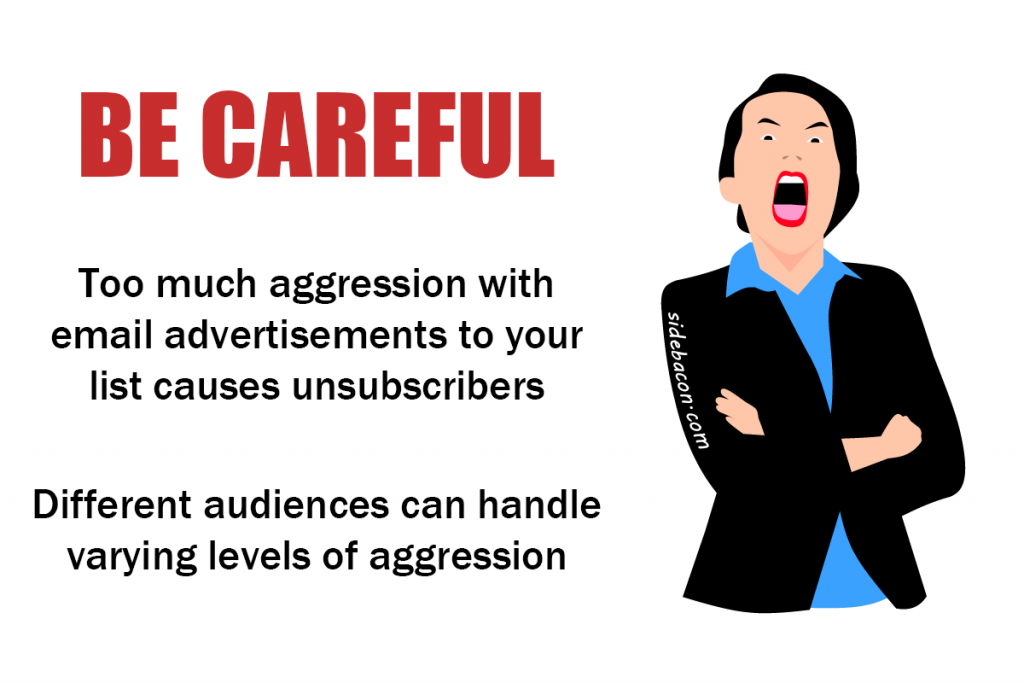
More aggressive methods are commonly used by marketers that sell to marketers, while a passive approach is more commonly used to target “normal” website visitors. I use the term “normal” here to refer to internet browsers that are not familiar with internet marketing, affiliate programs, etc.
It is important to keep that in mind when you make your website. Who are your readers and what experience do they expect?
To a certain extent, internet marketers have become numb to many ads and may not be as turned off by a few extra ads.
Most normal website visitors are looking for a friendly, helpful experience or else they will simply go to another website. If you can make this your primary focus, you’ll find that a decent majority of people will enjoy your website and buy from you when it suits their needs.
Try to get readers to interact with you. Make it easy for someone to email you and reply to all mails in a quick, friendly manner. When you make that connection with someone, they will often stick around to see what else you have to say because you’ve formed a special connection.

Chapter 7 Checklist
- Choose a Site Building Method That Fits Your Niche
- Build Your Site Page(s) – Keep It Simple
- Generate Your Newsletter Sign Up Form (Name & Email or Email Only)
How to Get Newsletter Subscribers
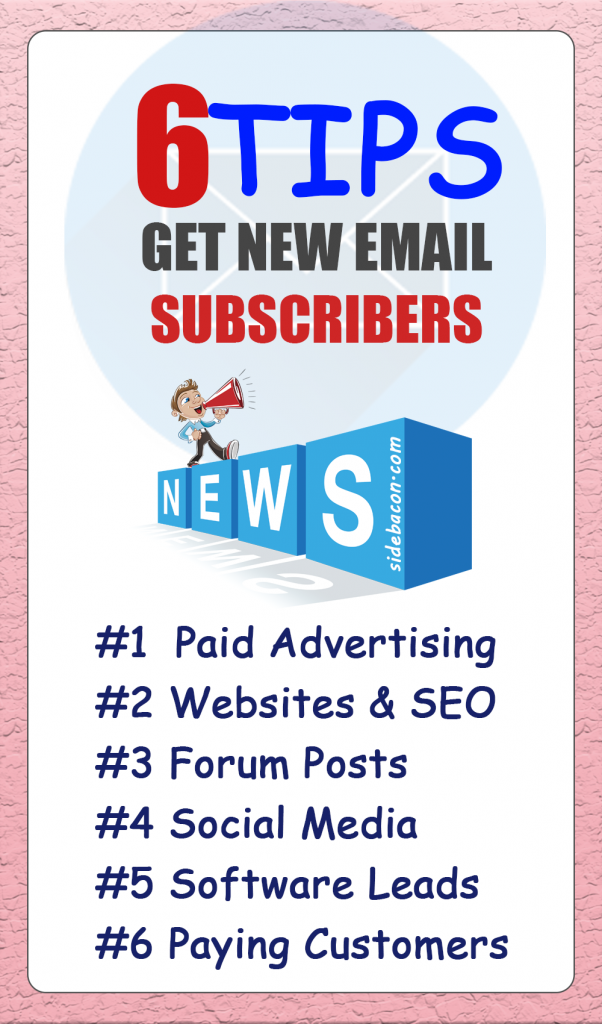
There are many different ways you can get new subscribers to an email list. Here is a partial list..
- Paid advertising
- Paying customers
- Websites & SEO
- Forum Posts
- Software Leads
It can be worthwhile to actually spend money to gain subscribers for your newsletter, especially if you’re confident that you can convert a certain percentage of your readers into buyers. However, I like to go the cheap route and build the newsletters myself. You also end up with a different kind of subscriber this way.
If you can get free search engine traffic to your site, that will certainly help you out since your site should be set up to convert traffic into subscribers. This isn’t a topic that I’m going to be covering in detail in this course, since it’s not absolutely necessary to make it work. However, if you build a content-heavy website that targets a specific niche then you should be able to easily get some kind of free traffic to your site each month from search engines that you can convert into newsletter subscribers.
Forum Posting Strategy
The technique I’m going to teach in this chapter does require a bit of work to be successful, but the end result is well worth it if the follow the rest of my advice.
Personally, I built my first newsletter using the Warrior Forum. This particular forum is nowhere near as popular as they used to be 10+ years ago, but this example is still a great one for reference. It shows what a complete beginner can achieve if they work hard enough.
This same technique can easily be applied to almost any niche, as long as there is some kind of free forum, message board, or a site like Reddit or Quora where that niche gathers. It’s also important to use a site that will allow you to have links in your forum signature, which is where you promote your website. If they don’t allow signature links, they must at least allow links in posts. However, I really prefer signature links because it allows you to be helpful in your posts instead of trying to direct people to a website, which can often be viewed as spammy.
You can actually use this forum posting technique to generate traffic to any kind of website, not just newsletter sites.
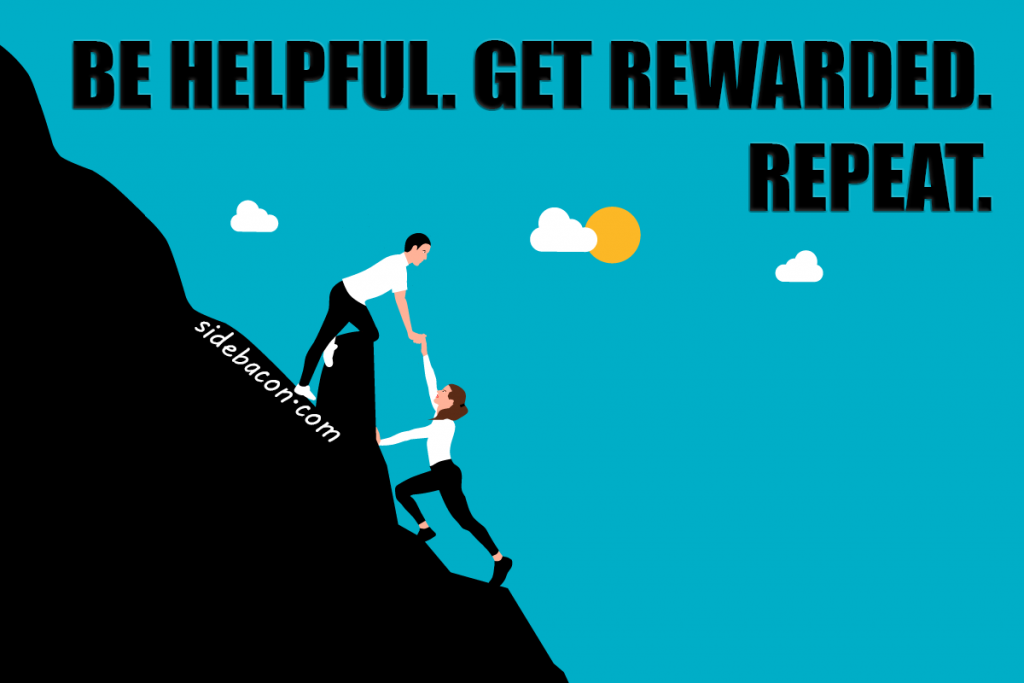
The trick is actually quite simple. Pick a busy area of the forum and write a detailed post about a particular topic. You want to be sure to pick a topic that is highly relational to your niche so you can bring in the targeted traffic that may be interested in what you have to offer.
The point of your detailed post should be to help and educate about the subject. You don’t want to make any kind of reference to your site, your products or even your signature. You certainly don’t want to blatantly direct them to a link in your signature to get more information – the thread that you post should be helpful and useful all by itself.
It will work best if your topic is extremely similar to your newsletter or if your topic is something that would lead people to have interest in your newsletter topic. People are encouraged when they read about things that are proven to work for other people. It makes them feel like they can do it too and that it won’t be a big waste of time.
As I’ve said before in this training course, make sure you don’t give people false hope and promises. Even if what you have to share isn’t super exciting, if you are honest with people about what they can expect, they will appreciate it and be more inclined to trust other things you say.
This type of forum post can become extremely popular and generate many daily subscribers. It doesn’t require constant posting either. Just one big post that is really popular. I’ve also been able to use this technique to make direct sales that don’t require people to subscribe to a newsletter, although I do prefer to be able to continually contact customers instead of just making a single sale.
Many people don’t know what to write about when it comes to making a public forum post. I like to approach it like I am writing a mini-ebook. Plan your information, format your text to make it appealing, and try to break the post apart into multiple sections that can be labeled.
You want to avoid lumping too much information into a single paragraph. Usually a couple of sentences is plenty for a paragraph. Online news sites are a great example of this technique, although some of them can do it excessively and only let a single sentence be in most paragraphs.
If you’d like to look into my technique a bit more, I have provided a link to my original thread below. I did go a bit too heavy with hinting at my own products/services as the post went on, but you won’t find any of that stuff in the original post. Most of the hinting was actually a result of someone else asking about my products/services, but I still could have been a bit more discreet about it.
Nonetheless, the post continued to be one of the best sources of new subscribers for a couple of YEARS. One day of work was well worth that reward.
When I first started that thread, I was actually selling a niche research service even though that’s what the thread teaches you how to do. Surprisingly, I had quite a few research sales and ended up pulling that offer because I didn’t have the time for it because of other business obligations.
Forum Post Sample
I’ve included a link to the actual forum post that I’m talking about in this guide. However, I want to point out that the post is about 12-13 years old now (in 2022). As a result, the actual training in that post is NOT all relevant anymore (especially the information about exact match domain names – that’s an old trick that isn’t relevant anymore).
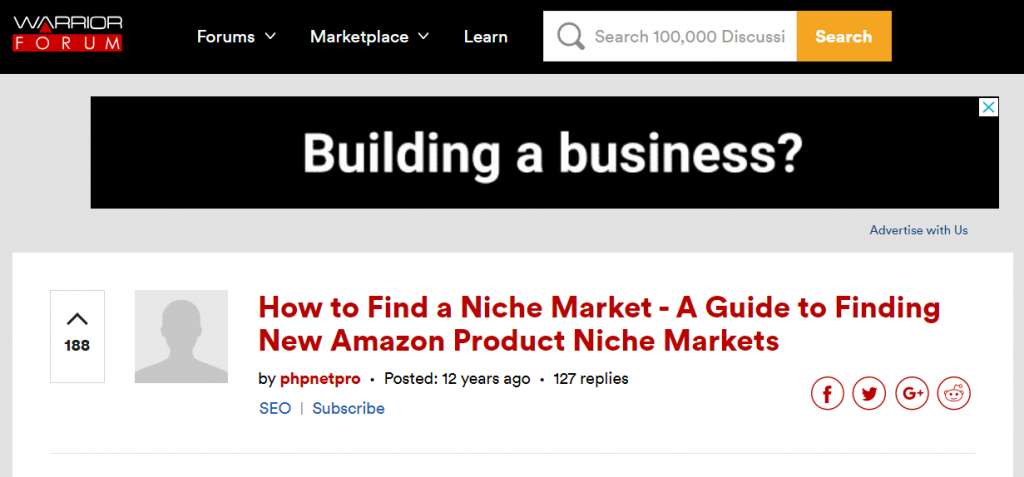
Here’s the link to the original forum post:
This post is another excellent lesson in itself because it shows you the true value of helping others. People will truly reach out to you when they see you giving your own time and knowledge to help others for free, even if you are trying to sell something on the side. When you can learn to avoid a “SELL SELL SELL” mentality with your writing, you will actually find that sales increase.
Once you figure out what people respond to relating to your niche, you can easily churn out many different sources of subscribers for your newsletter using this technique. Even better, you’re not just building useless lists of email addresses. A decent portion of the readers you will gain from this technique will be active, loyal subscribers.
One more thing that I want to mention about this technique is thread activity. You will receive the most loyal readers if you continue to keep up with your forum threads AFTER you post them. You should subscribe to each of your promotional threads so you can receive instant email notifications when someone has made a post on your thread.

Try to make a point to give a personal reply to EVERYONE that posts a message. Make sure you say their name or forum username in your reply so they will be able to see that you were actually paying attention to their message and are genuinely interested in helping. Definitely try to answer any questions that are asked, although you don’t have to give out your secret information on the public forum. This personal touch has a dual purpose. First, you gain great subscribers this way. Second, the continued activity on your forum posts will keep it in a highly visible area on the forum. It can also show your signature links over and over again.
If you are posting on a very busy forum, you can let a bit of time lapse after you receive a reply on your thread. This allows your thread to spend a bit of time on the first page on the forum and then your reply to the thread will give it yet another run, which doubles your exposure.
Alternatively, you can also try very fast replies to try to get a live conversation going on your thread. If you can get this going for a certain period of time, especially between a few different people, it’s a great way to keep your thread at the very top of the first page. This can get you a lot of exposure in quick bursts.
For long-running threads that gain a lot of attention and replies, a lot of websites will break it into multiple pages. Try to take note of how many posts until a page is split. If you can be the first and last post on each page, your signature links will get more exposure.
Slower forums can also be nice because your threads can continue to get exposure without close monitoring, even though the exposure will be much less at any given point in time. Sometimes steady wins the race.
Think of your newsletter like an amazing dinner. Your forum posts are your appetizers that gets the readers to crave more. Your newsletter should be satisfying all in itself, just like the main course, but the real goods are left for the dessert. The dessert is your product that people simply can’t resist even when they’re already satisfied. This essentially means that you need to use your forum posts as a way to whet their appetite to learn more.
As you know, not everyone goes to a nice restaurant and gets dessert, but you that’s quite alright. You should not worry when you have readers that don’t buy things because these readers can often be your most powerful allies.
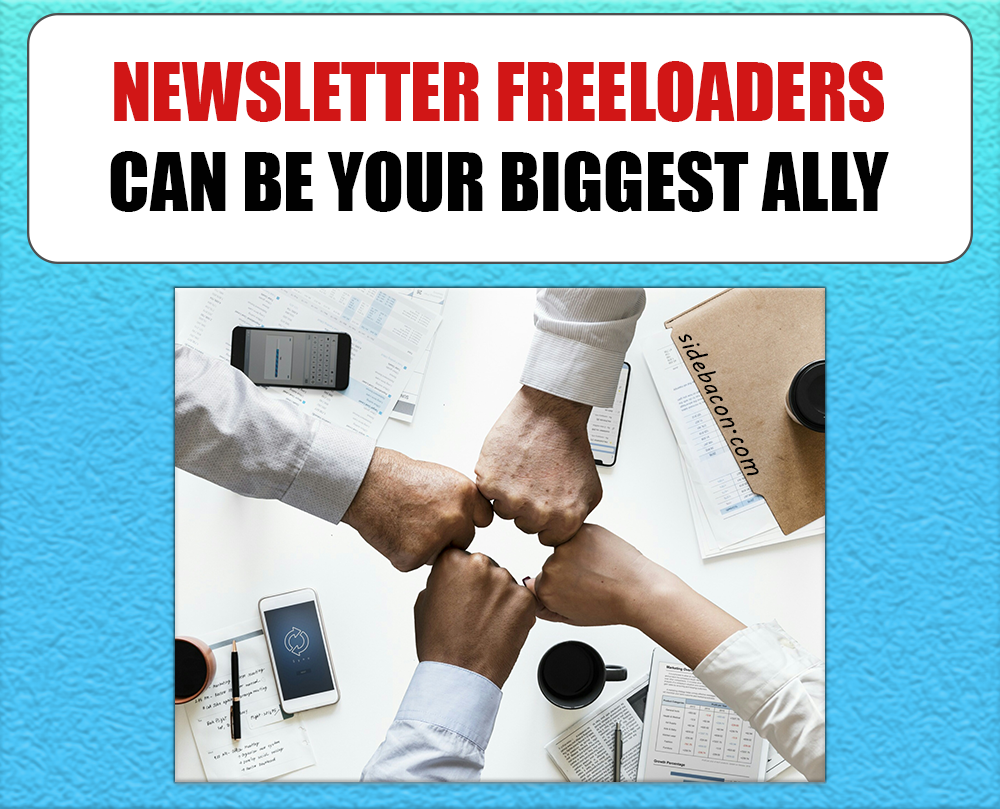
As they enjoy the benefits of your newsletter and continue to be a “freeloader”, some of these readers will feel like they should pay you back for your generosity in other ways. This is often where I see other people start to talk about your newsletter to others. More importantly, they have experienced the free side of your newsletter without buying the products. They will focus on the things that will attract more readers instead of talking about your paid products.
Beyond starting your own threads, you can even spend time answering questions presented in other threads. With related signature links, this is another superb way of attracting new subscribers and flying under the radar. However, it does take more work overall.
Even when people know you are doing something to market your sites or sell a product, it’s hard for them to say anything about it when you are extremely helpful. I say this from personal experience on public forums. I have had people try to call me out for being discreet about marketing something through a forum post. I was quickly defended by other readers on the forum who said that they prefer my method of marketing and are happy to buy something from a truly helpful marketer.
I spent many years browsing forums long before I ever opened my mouth on one because I didn’t want to say something stupid. When I finally got around to it, I had things of my own to promote and something important to say to people.
Ultimately, someone that is successful and filled with knowledge won’t just sit around and help anonymous people for a long amount of time without being able to get something in return. Forums that allow signatures give professionals the opportunity to share their knowledge with others and get free exposure, which is undeniably a good situation for everyone involved.

Chapter 8 Checklist
- Find Public Forums Or Other Websites Where You Can Gain Exposure
- Come Up With A Plan To “Whet Their Appetite” For Your Newsletters
- Always Focus On Helping Others And Being Friendly
- Use A Combination Of Your Own Threads And Other Threads To Maximize Exposure
- Speak From Personal Experience And Knowledge
Retaining Existing Subscribers
Before I get into my techniques for this chapter, I want to make sure you understand one thing.
No matter how hard you try and no matter what you do, people will still unsubscribe from your newsletter.

It is a simple fact, so do not get upset or take it personally when someone leaves your newsletter.
I do have a lot of tricks and techniques to share with you that will lower this rate to a bare minimum. Ultimately, you will still get some random people that join your newsletter to see what it is about and may simply not be interested. Others will just join your list for your free bonus and immediately unsubscribe. When someone unsubscribes from your newsletter, you should view it as a positive – you don’t have to send out another email to someone who doesn’t care about your topic or your business.
Start From Scratch
The first key to retaining existing subscribers is to properly lay the groundwork from the very beginning. That is why I talked about planning your newsletter before you actually start to do the work.
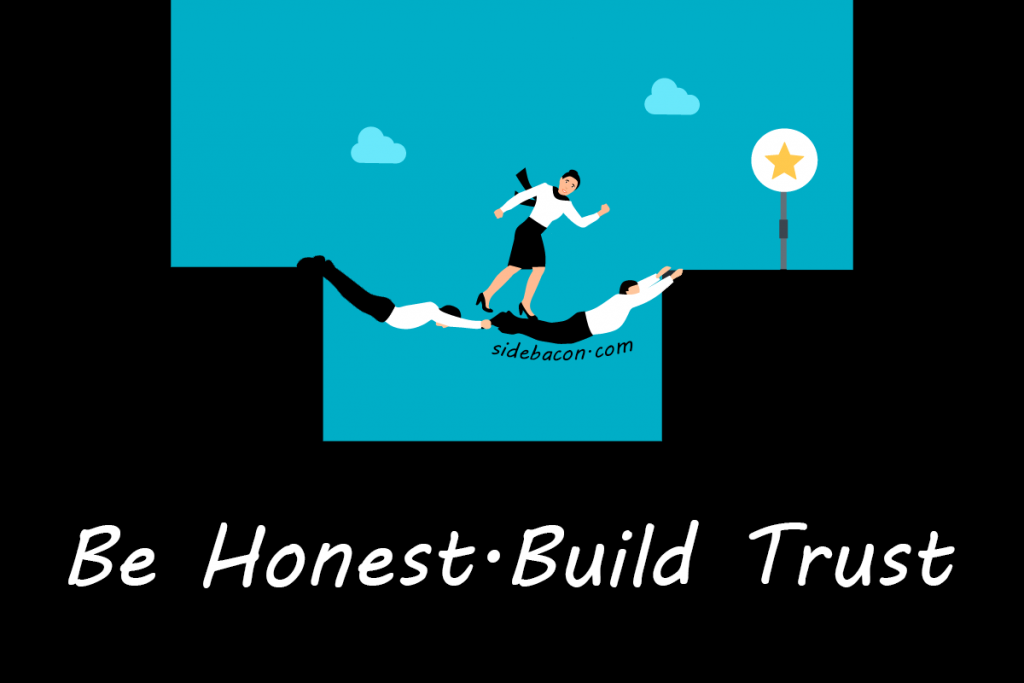
When you have a focus for your newsletter, you can concentrate on attracting a specific type of reader. This will give you a group of people that is very interested in almost anything that you have to say. By building a subscriber base that only consists of highly targeted readers, you will avoid losing subscribers because they were simply not interested in what you have to say.
Many people will be vague or even misleading to get people to join their newsletter. If you are honest and upfront with your website visitors BEFORE they ever sign up for your newsletter, you will be able to start building trust with your readers from day one.
When you tell someone what they are signing up for, they will only join if they are interested. If they are not interested, there is an overwhelming chance that they would never convert into a sale for you. Many people may want to be able to say they have thousands of newsletter subscribers, but I can assure you that a few hundred loyal readers is more than enough to make quite a bit of money each month.
Get Personal
Treat your newsletter readers like a good friend of yours. Try to get personal with them, although don’t go overboard.
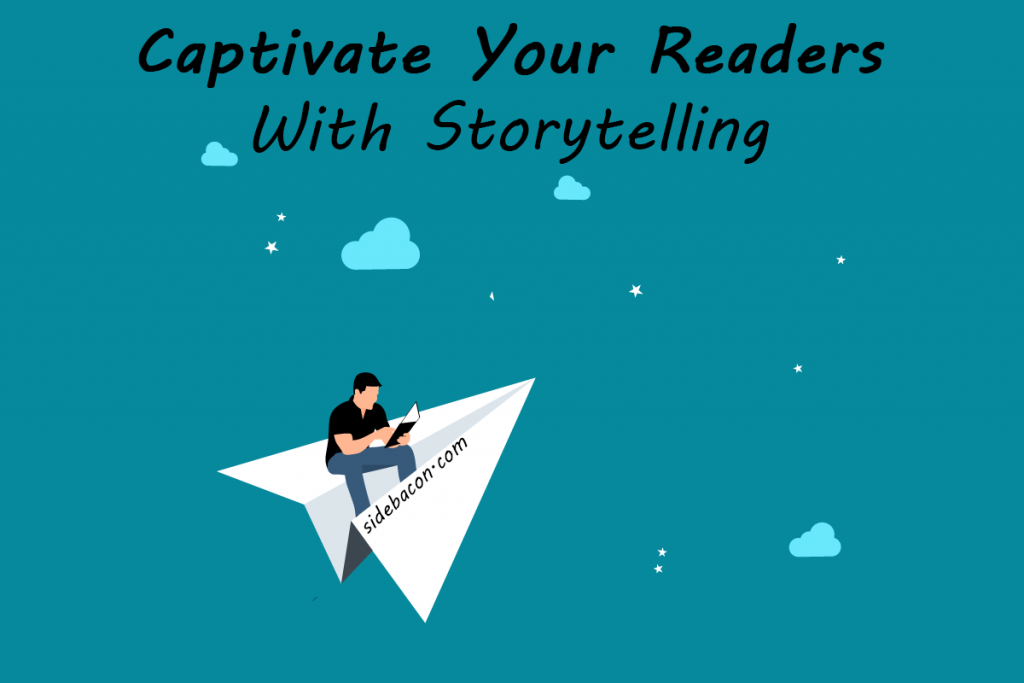
When you talk to people like they are your friend instead of a prospective sale, you will be shocked by the results. You can easily cause people to leave your newsletter if your emails just sound like they are articles pasted into an autoresponder.
Try telling them stories about yourself that have relevance to your niche topic. The simple answer here is to be yourself. When you try too hard to be something you’re not, it shows. You don’t want to suffer from imposter syndrome.
People will like you for who you are, even if it’s not everyone. The people who do will like you even more because you are unique and real.
As long as you aren’t in a niche that could be considered conservative, you can even try to have a bit of fun with your readers. However, be careful not to go overboard if your readers are an older and more educated crowd. Your niche will make a big difference too. Business advice and entertainment don’t exact feel like a match.
You can always test the waters with something minor and see what kind of reaction you get. Every niche will be different, so you will have to get a feel for what your readers like to see in your emails.
Stay On Topic
Unless you completely run out of options as the years pass, you need to make sure to stay on topic with your newsletter emails. This is another reason why it is important that you plan out your newsletter correctly from the beginning.
If you pick a niche that is too narrow, it is too easy to run out of good topics to talk about. Once you run out of topics, you’ll be tempted to branch out into nearby niches or even test the waters with something entirely different. The last sub-section in this chapter, ‘Change vs Choice’, will give you a realistic look at your options if you do find that you have truly run out of things to talk about relating to your niche.

If you have been running a newsletter for a long time when you run out of content, there is one thing that you may be able to do before you make other tough choices. If you have been using AWeber since the beginning of your newsletter, you can easily split your newsletter into different groups that you can email individually.
This can be an extremely useful feature in this sort of situation because you can split your list based on when they joined your newsletter. More recent subscribers can then start receiving autoresponder content that you load using your old newsletter broadcasts, while the older subscribers can be handled in another way. It is important to make sure you don’t load outdated information into your autoresponder when you do this, or else it’s a dead giveaway that you are using your old emails or copied articles (definitely don’t do this). Even more important is the fact that you would be sending out useless emails.
When your newsletter is young, you simply need to stick to your planned areas of discussion. This can be in an organized or random manner, as long as you are talking about topics of interest to your readers.
Also consider news-style content. For example, if I ran a newsletter about email marketing and ran out of content without duplicating post topics, I could start talking about other companies or events relating to my niche.
Offering Value
Too many people focus on ways to get people to join their newsletter and then don’t devote enough attention trying to retain those same subscribers. In my opinion and experience, it is a lot easier to retain existing subscribers than it is to constantly replace a lot of people that leave.
Once you have come up with a plan to get people to join your newsletter, ask yourself this question: Why is someone actually subscribing to my newsletter? After they join, it’s time to follow up on that reason and let your readers know what to expect. As long as it fits your niche and makes sense to people, it’s hard to go wrong.
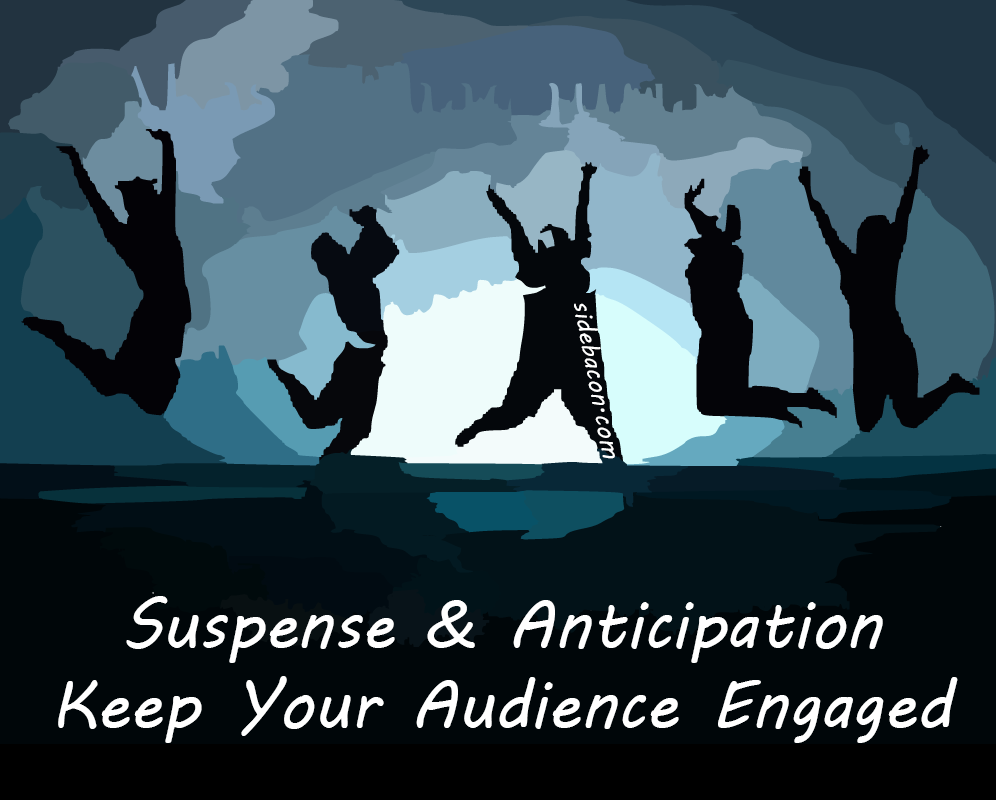
I like to try to give my readers something to look forward to. You can have some kind of regular event for your newsletter, like a free giveaway or a contest. You can also come up with a regular newsletter edition that has a very specific focus. “Flashback Fridays” could revisit an old piece of your content to give updated information. Another alternative is “Freebie Friday” where you give something to your readers for free.
Come up with a few ideas for your niche that will give your readers something to look forward to and then try them out to see which ones are popular. This doesn’t have to be something that is a huge deal, just something that people will find interesting or useful.
I really wish I could direct you to a specific idea for this strategy, but it is truly dependent on your niche and even what products you sell. I try to tie this regular event to something that I sell, even though the actual event is completely free.
To be specific, I offer free research once a week to a limited number of readers. This doesn’t cost me anything, although it does take a fair amount of my time one day a week.
When someone claims one of these research spots, I offer optional recommendations. I also promote the sale of my own products, a training course, and even software to the freebie winners.
This is probably the best example that I can give you when it comes to offer value to your readers. I have given them something to look forward to each week, it doesn’t cost me anything except time and I even make some regular affiliate and non-affiliate sales at the same time. It is truly a win-win situation for you and your readers. If you can come up with a similar strategy for your own niche, readers and products, you will find yourself popular and successful.
Product Sales
It is very important that you are careful with your product sales with your newsletter if you do not want a lot of unsubscribers.
If you promote your own products and have a very limited selection, you may find that some of your best customers will unsubscribe once they buy everything you have to offer. There are a few ways that you can avoid this problem. However, no matter what you do, some people will still leave your newsletter.
Try not to worry about unsubscribers unless you’re seeing a mass exodus. Ultimately, if someone is not interested in your content or what you are selling, then you don’t really want them on your list. In this regard, you can view it as a positive instead of a negative.
Promoting the same item repeatedly can cause those that already bought to unsubscribe since they can’t gain anything from those emails.
If you must promote the same item constantly, try to split your customers into targeting groups so you can exclude them from your mailings. The easier option is to only send out helpful emails with the ads as an extra.
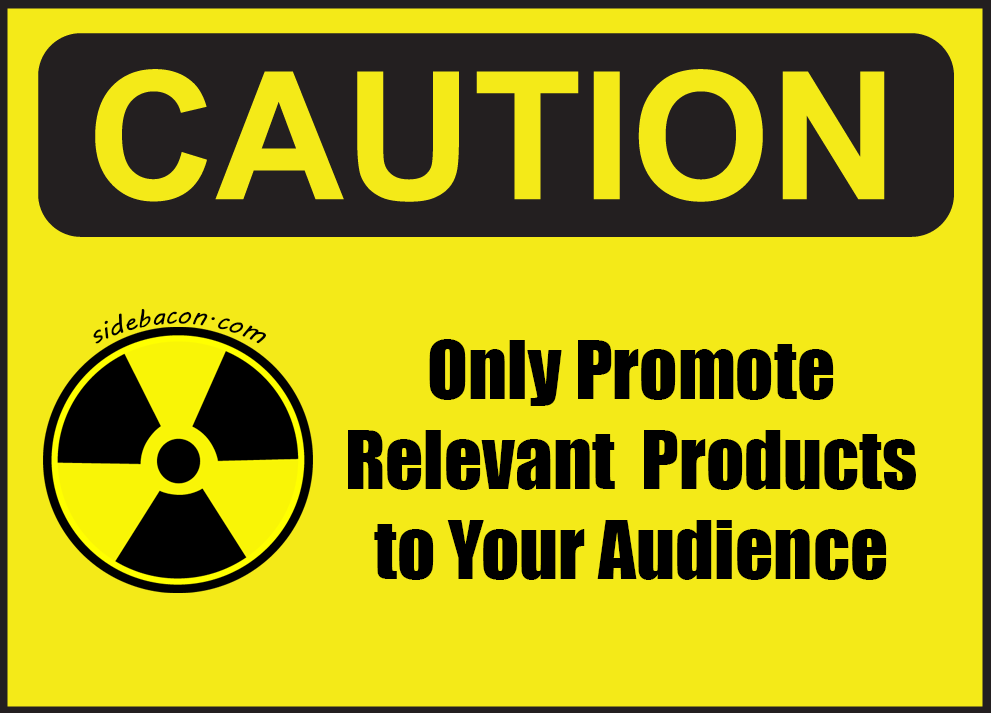
By offering more products of interest to your readers, you have a better chance at retaining customers.
The most professional and reliable way to handle this particular problem is to transfer the subscriber to a different newsletter as soon as they have completed a purchase.
The best way to do this is to provide a newsletter subscription form on the thank you and/or download page for a product that you have sold. Tell the customer that you are offering this new newsletter sign up form if they would like to opt out of advertising for the product they just purchased.
You can actually handle this a few different ways easily with Aweber. The main idea is to get the customer to join this newsletter so you can easily filter them from certain emails in the future.
I like to have another newsletter to opt-out of each product that I sell. When someone joins one of them, they still remain on my main newsletter.
When I send out a mail on the main newsletter that should not go to a particular group of people, I simply exclude the opt-out newsletter from the list and AWeber keeps them from receiving the mail.
Make sure you stray away from the popular Clickbank, JVZoo, or Gumroad affiliate products that LOVE to use horrible sales tactics, especially if you maintain a level of quality with your own products.
Change vs Choice
It’s not uncommon for email marketers to reach a point where they feel like they have to make a change with their newsletter. If you’ve followed the advice in the earlier section and have no other options, this section contains my recommendations to deal with this situation professionally.
Most email marketers will reach this point with a newsletter and then simply make the changes to their existing email list. There are a few big problems with this situation that you really want to avoid at all costs.
Most importantly, when people joined your newsletter, they joined for a particular reason (generally to find out about a specific subject). When you switch things on them without getting their permission, you technically violate spam policies. This alone will cause loads of people to unsubscribe from your list and spam complaints on your mailings.
Next on that list is the problems that you cause to your own newsletter with change. I truly believe that this is a big reason why active, responsive lists switch to inactive lists (even with thousands of subscribers).
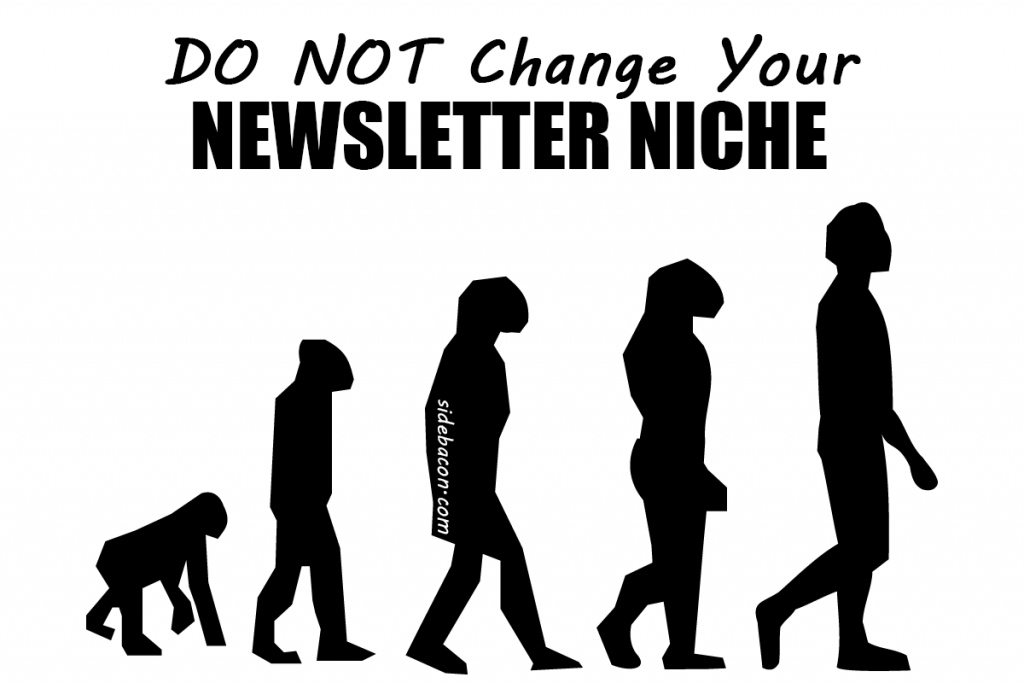
When you switch your newsletter niche, you are killing your targeted leads. Just because you think you have run out of things to say about a particular niche doesn’t mean that your subscribers have lost their interest in that niche and moved on to other things.
Instead of forcing change on your readers, offer them a choice. When you put your readers in control of a situation by giving them a choice, you will gain respect and loyalty from your readers even if they don’t like the changes.
Here’s what I recommend. As I mentioned in a previous section, convert your old broadcasts into autoresponder messages. These can be used for your new members that will certainly want to keep learning about your current niche and they can also be used for members that don’t want to change.
Next, create a new newsletter for the new niche. Then, you can proceed about your change as planned with one minor difference at the beginning.
Simply email your readers to announce the change, but make sure you present it as an optional choice. If your readers do nothing, then you should not make any changes to their newsletter subscription! If they choose to do so, they can sign up for your new newsletter through a new sign up form that you create. You can even offer the option to unsubscribe readers from your existing newsletter when the join the new one.
By doing this, you will likely end up splitting your list pretty good, but the key to this plan is that you have still maintained your interested readers in a targeted newsletter and have made the change at the same time.

Chapter 9 Checklist
- Attract Interested Readers
- Be Friendly. Be Honest. Be Real. Be Entertaining.
- Keep Your Emails On Subject
- Give Readers Something To Look Forward To
- Strive For Quality Above Anything Else
- Be Proactive To Retain Customers
- Offer Choices Instead Of Forcing Change
Long-Term List Growth & Management
Once you have a popular forum thread running for a while and gain experience with your list, you will probably be anxious to attract even more readers.
Although the main objective of this online training course is not to teach you a ton of specific methods to attract new subscribers, I do want to give you a few tips on some good ways to do this for free.
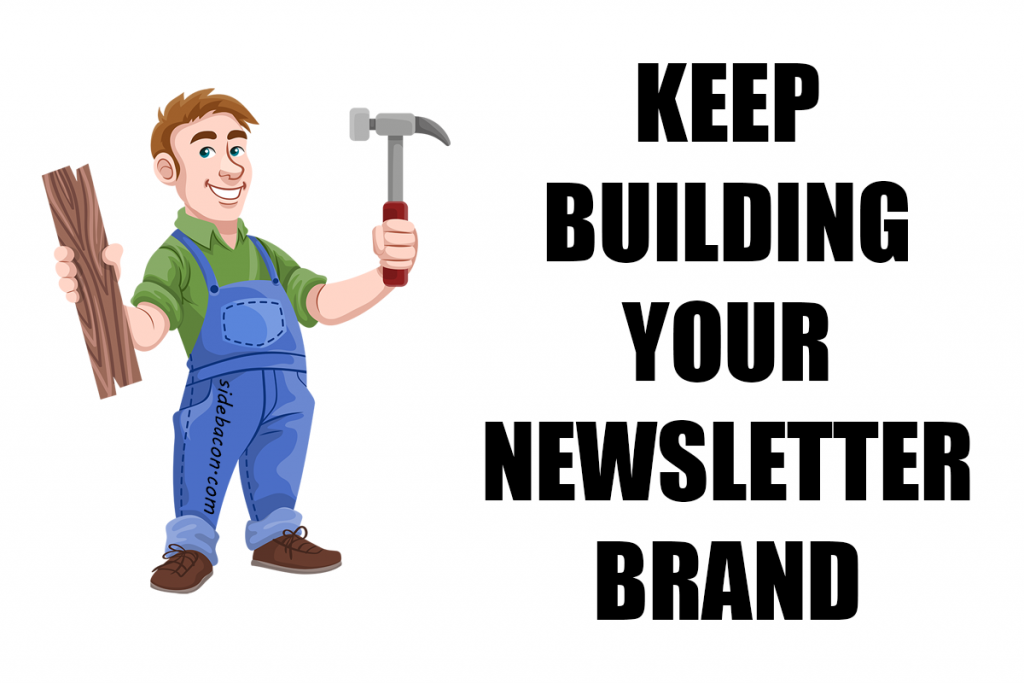
The best advice that I can give is to promote your newsletter site just like you would any other website. Write articles, build backlinks, create a Facebook page, create YouTube videos, create tweets on Twitter, pins on Pinterest, videos on TikTok, and use forum signature links along with active, helpful tips are just a few good examples.
If you can market your name and/or your brand name in a professional manner, you can generate a very steady stream of subscribers for your newsletter. The key with any marketing is to be friendly, genuine, helpful and honest.
You don’t have to give away all of your best information to attract readers, but you should be able to talk about a subject in-depth so people can see that you actually know what you’re talking about. This is what helps to set you apart from the crowd to at least get people to visit your website to find out more about you.
Constant Pursuit of Subscribers
No matter how many subscribers you have on your list, you will always need more. That’s why it’s important to market your list in a manner that can continually refresh your subscribers. This will help to ensure you can make sales on a regular basis, since that is a general goal of most email marketers.
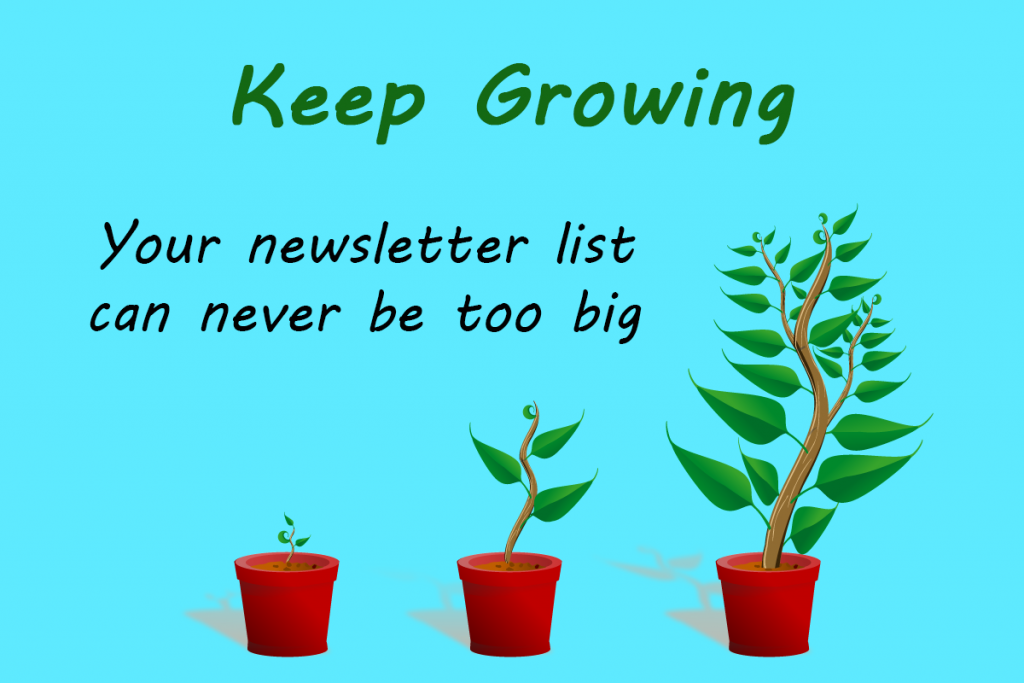
Monitor your subscription rates on a daily and/or weekly basis. Think about a goal of how many subscribers you would like to have one year from now and then divide that number by 365. As an example, if you get an average of 10 new subscribers every day, you would have 3,650 readers after a year (assuming you can retain all of your subscribers).
If you follow my advice in this newsletter, it is not very difficult to obtain that many total subscribers within a year. In fact, a single active thread on a popular forum can produce more than 10 new subscribers daily. The more times you put your helping hand out into the world on a regular basis, the higher that number can go.
This plan is truly “Karma in a Box”.
In general, I would expect 10% of your readers to unsubscribe from your newsletter (either quickly or within a few months, depending on your newsletter). Don’t obsess over 10% because every niche can certainly vary.
Just keep in mind that higher rates generally mean there is room for improvement. You might need to improve the way you attract subscribers or the way you retain existing subscribers, so make sure you take a look at both aspects instead of assuming that one of them is to blame.
If you want to stray from my advice and do some of the things that I recommend NOT to do, you can easily drift into the 25-50% range or even higher.
No matter what products you sell, it is also wise to release/promote new products on a regular basis to keep your list and sales fresh.

Chapter 10 Checklist
- Continue Active Marketing To Gain New Readers
- Monitor Subscribe/Unsubscribe Rates
- Make Adjustments If Unsubscribe Rates Are Too High
- Pay Attention To Your Sign Up Methods And Newsletter Techniques
- Release/Promote New Products On A Regular Basis
Training Course FAQs
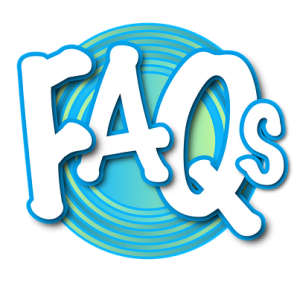
How I Run My Newsletter List?
You may be curious exactly how I run my own email list. By joining my list, you’ll be able to see what I do, which can give you new ideas for your own list.
» Join My Newsletter List Here
Are email newsletters still effective?
Yes, email newsletters are still one of the most effective marketing techniques. Even with heavy usage of social media these days, having an email list remains one of the best ways to contact your audience. You will reach a larger percentage of your audience with a newsletter compared with social network followers. As long as people continue to use email accounts, this strategy will stay powerful.
Do email newsletters work?
Yes, better than websites or even social media. This tactic allows you to keep in contact with your audience instead of relying on them to visit your site on their own. Being able to send hundreds or even thousands of visitors to any web page lets you drive more sales and even increase social media engagement. Ultimately, a newsletter will let you build loyalty with your readers.
How often should you send an email newsletter?
It depends. Subscribers can get used to any mailing frequency, even daily mails. However, the more often you contact your subscribers, the more often people will unsubscribe. A reasonable rate is 1 or 2 emails per week, which tends to give a decent balance with the ability to drive sales versus overloading your subscribers with too many emails. Do what is best for you, your business, and your readers, and don’t worry too much about sticking to a specific mailing frequency.
Can you monetize email newsletter?
Absolutely! In fact, email newsletters are one of the most effective monetization strategies for any website or online business. By including links in your newsletters, you can direct readers to visit any web page. Set up a sales page for a product of your own or an affiliate offer. Then include a link to that sales page in a newsletter email to send traffic and refer sales to earn money.
Which email newsletter service is best?
AWeber, by far. The features offered by newsletter services really doesn’t matter. The #1 most important factor is delivery rates. If your email doesn’t reach the inbox of your readers, nothing else matters! AWeber requires double opt-in confirmation, which ensures a spam-free network. This results in better delivery rates for everyone using this service.
When to send out email newsletters?
The timing of your newsletter is very important. Each niche can vary, so be sure to do run some tests to see what works best for you. However, in the USA with a list of mainly USA residents, I have two specific times that I have found to be the best to send emails: 10am and 8pm EST. These times help to reach subscribers on both the East and West coasts. It also gets people that are at work during the day and again when they’re home for the night.
Best day to email newsletter?
The best day to send mails to your list can vary depending on the niche. However, weekdays will often outperform weekends because a lot of people will check email and browse the internet from work. Wednesday and Thursday are my personal favorites. Niches that favor weekends are often the most powerful on Sundays. Be sure to run some tests with your own list to figure out which day works the best for your readers.
Why email newsletters are so valuable?
It’s hard to get traffic to your website. An email newsletter allows you to contact your visitors anytime. Instead of waiting for people to revisit your site on their own, you can direct them to visit specific pages on your site. The ability to send hundreds or even thousands of visitors to a single web page within a couple of hours is extremely valuable. That on-demand traffic can be used to sell products or services over and over again. This massive revenue boost is what makes a list so valuable.
Why email list is important?
A random website visitor won’t know anything about you, so they won’t trust you yet. When you can get a visitor to join your email list, you’ll be able to contact them over and over again in the future. This continual contact allows you to build trust and loyalty with your readers. This is extremely important when you’re trying to sell products and services to your list.
Is email marketing dead?
No, and I don’t think it will ever die. Email seems to be a communication method that will continue to exist and thrive for a long time. As long as people continue to use email accounts, email marketing will continue to be a successful strategy for all online business owners. Even with heavy social media usage these days, email lists are still a more effective way to get in touch with your audience.
Is email marketing effective in 2022?
Yes. I’ve been using newsletter lists for about 13 years. I find them more effective today in 2022 than they were 10 years ago. Many people assume that social media has taken over and made email obsolete, but this is actually the opposite of the truth. It can actually be more difficult to reach your audience on social media compared to email lists since you have to fight for exposure with others.
Is email marketing effective in 2023?
Email marketing is going to continue to be effective in 2023, 2024 and many years beyond. I can confidently say this because nothing else is going to replace email during that time. Social media won’t replace it. As more people use social networks, it will become harder over time to reach your audience since you’ll have competition on news feeds. With emails, your message goes straight to your audience with no distractions.
Does email marketing cost money?
Yes and no. It is possible to run a free email newsletter, but you would need your own web server to do so. A web server is much more expensive and less reliable than using a paid email newsletter service like AWeber. These paid services start around $19 per month. It is well worth this cost. Trying to start with a free list and then later switching to a paid list can cause major headaches for you (I did it, so I know from experience). The cost of a paid service is very minor compared to the income potential of a newsletter, so it’s well worth the investment.
Does email marketing increase sales?
When done correctly, yes. This page contains an in-depth online training course for email marketing that is completely free (no sign-up required). Use this tutorial and walkthrough to learn an effective strategy to use your list to increase your sales and revenue. Ultimately, it’s the increased customer loyalty and trust that makes a list so effective at driving more sales.
How email marketing helps business?
#1. Customer loyalty and trust is greatly increased when you email them on a regular basis and share useful content. The ability to contact your readers on-demand and direct them to any web page is a game changer for sales. Selling your own physical goods, services, or even promoting affiliate offers are all more effective and profitable when done with an email newsletter list.
How email marketing improves customer engagement?
A first-time visitor to your website doesn’t know you and likely doesn’t trust you. However, a newsletter subscriber will read your content continually over time. This lets them build up trust in you. Trust is the real secret of email marketing. When your readers trust you, they are much more likely to take your advice, visit web pages that you recommend, and take other actions that you direct them towards. There is simply no comparison between this type of reader and a cold visitor on your website when it comes to engagement.
How email marketing can help seo?
Even though email newsletters don’t get indexed by search engines, they can still help search engine optimization efforts to get rankings and traffic. Google actually monitors activity of your website visitors and can use some of these metrics in their ranking algorithm. For example, high bounce rates could decrease search rankings, but visitors from a newsletter list will likely have very low bounce rates. This traffic from your list can improve metrics that are a factor with SEO.
Where to get email marketing lists?
The #1 mistake you can make as an email marketer is to buy a list. You need to set up an account with an autoresponder service like AWeber and create a signup form. Place this form on a page of your website and then send traffic to that page to get them to join your list. That is the only way to get an email list that will actually benefit your business long-term. This website contains a free training course to teach you how to create your first list and where to find new subscribers.
What is list in email marketing?
A list is a simple, generic term for a collection of email addresses. To build an audience, you place a sign-up form on your website. Traffic to that page can then join your newsletter. Collectively, all of the subscribers you’ve obtained can be considered your “list”. You can write and send out an email to this list of subscribers anytime you want. This allows you to direct traffic on-demand to any web page.
Who regulates email marketing?
The Federal Trade Commission (FTC). In 2003 the CAN-SPAM act was passed by Congress and made into law in the USA. This gave the FTC power to regulate and enforce this industry. It also places restrictions on how you can use email marketing tactics. Take a look at the CAN SPAM Act of 2003 page on Wikipedia for more detailed information on the requirements of this law.
Why email marketing is important in 2022?
As social media networks become more popular, it is actually more difficult to use them to get traffic. You are in competition with other influencers on news feeds, so you don’t have a guaranteed way to reach your entire audience. With email marketing, your message goes direct to your readers and waits there until they see it. This allows you to utilize a larger percentage of your audience to refer sales. Any online business in 2022 that isn’t using an email newsletter is leaving money on the table.
Why email marketing is important for small business?
Small businesses often can’t compete for paid advertising traffic with big companies online. It simply costs too much money per visitor to make a profit. An email newsletter changes that equation in your favor though. When you get a website visitor to join your email list, you’ll get more than one opportunity to sell to them. This increases your total revenue for each website visitor, which means you can afford to spend more to obtain that traffic. This is what corporations do, and small businesses need to do the same to compete.
Why email marketing is important for ecommerce?
It’s tough running an e-commerce website when you need fresh traffic to drive sales. Traffic from search engines and social networks can be slow. When you have built an email list with your website traffic, you can direct them to visit a web page. This massive influx of traffic to a page that is selling your ecommerce products is one of the easiest ways to increase sales for this type of business. It’s the #1 strategy I use to make sales on my e-commerce site that does around $20,000 per month in revenue.
Will email marketing die?
Not anytime soon, if ever. A technology would have to be created that would replace email accounts as a form of communication. Even though text messages and social media are very heavily used today, everyone online still needs to use an email address. Those emails are often used for business purposes and/or to keep track of bills and other important online accounts. As long as that continues to be true, email marketing will continue to live and be a successful strategy.
